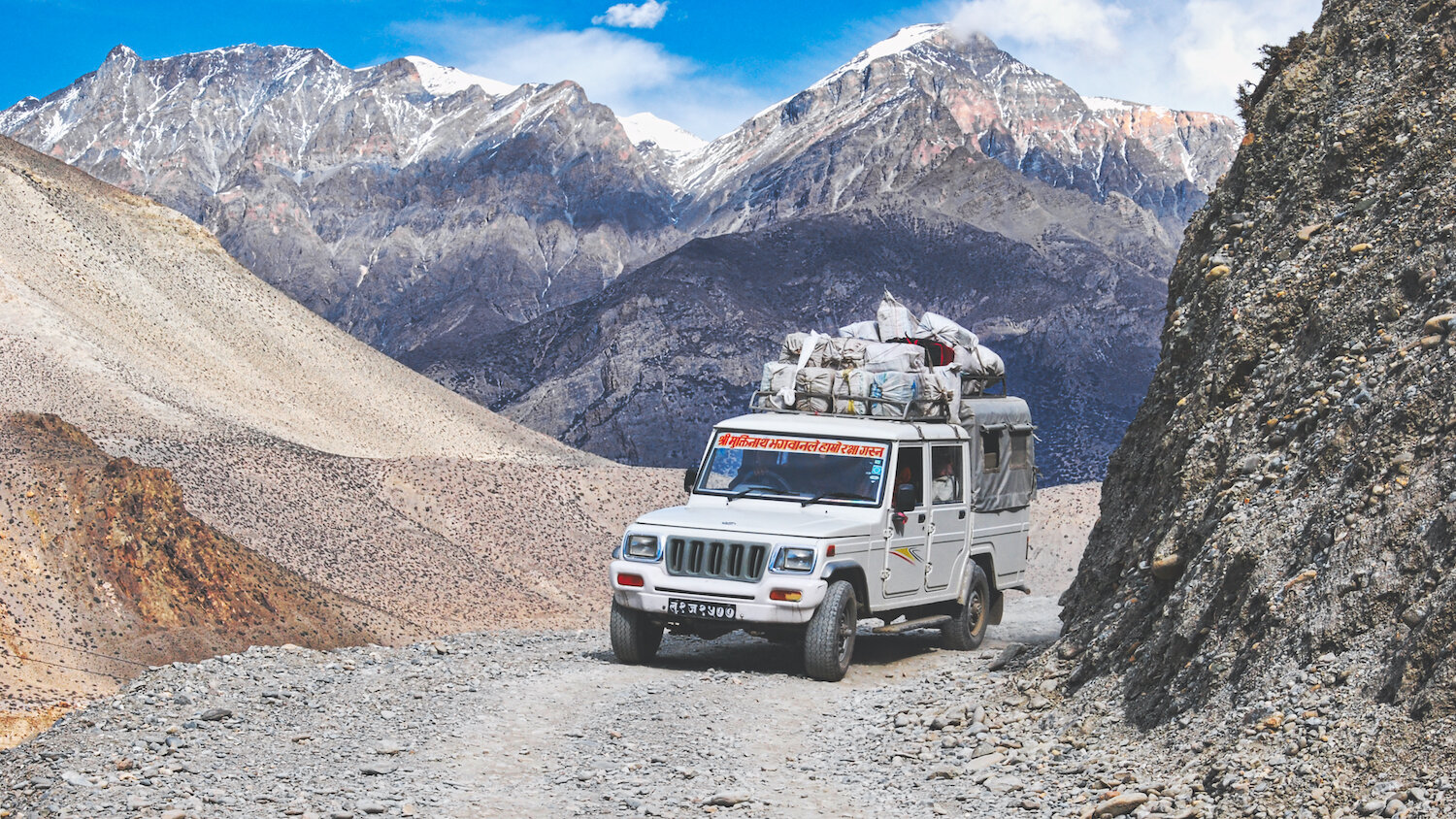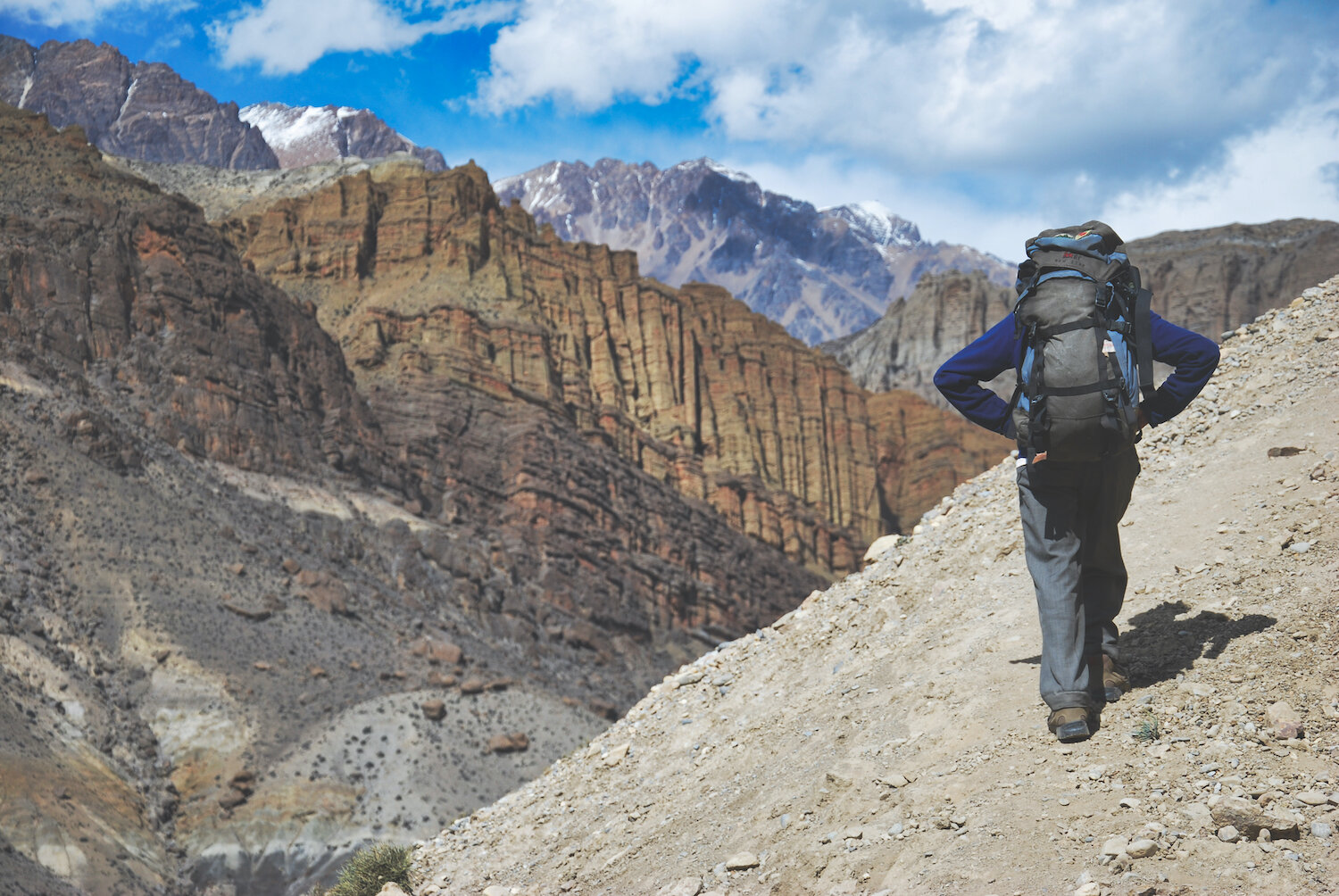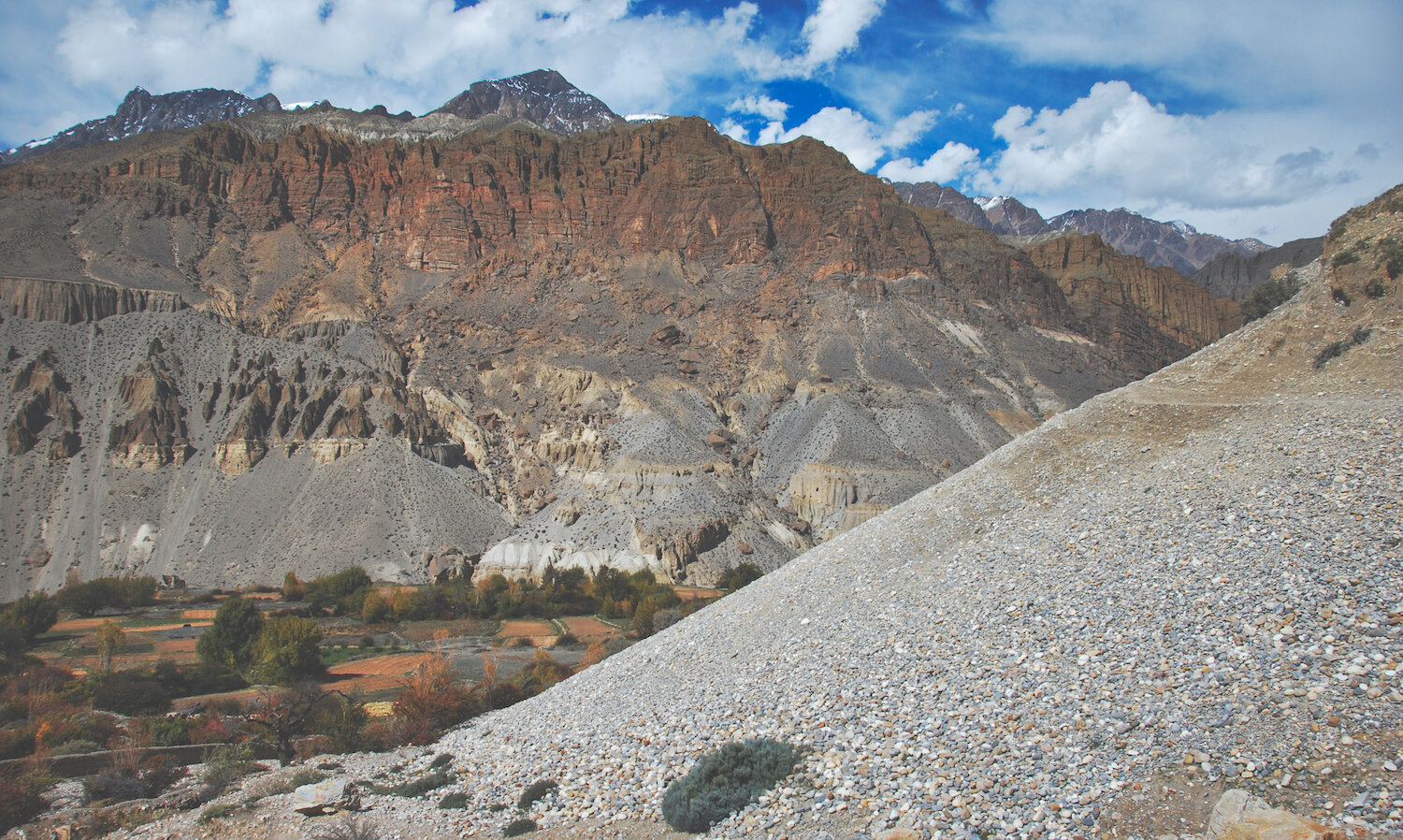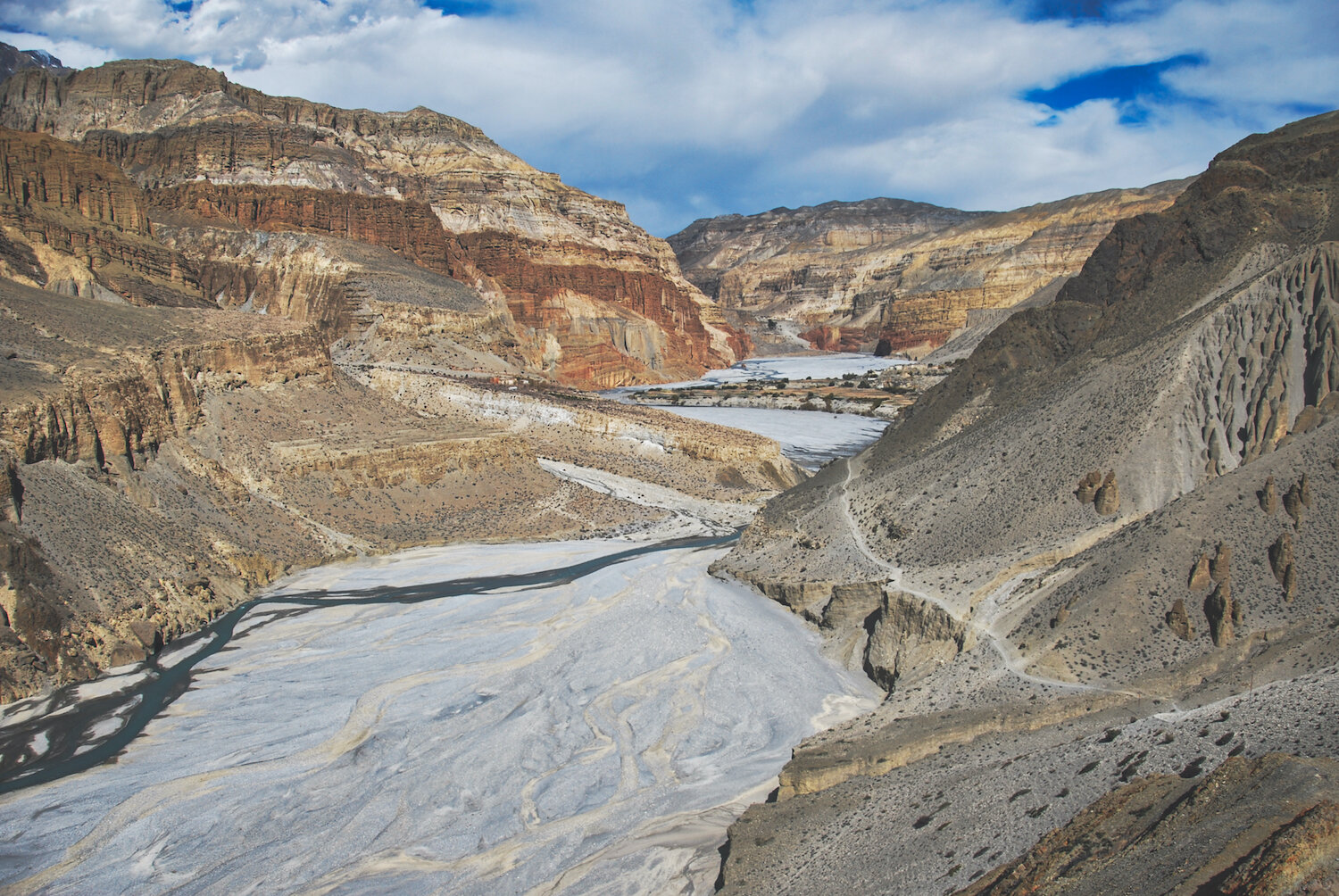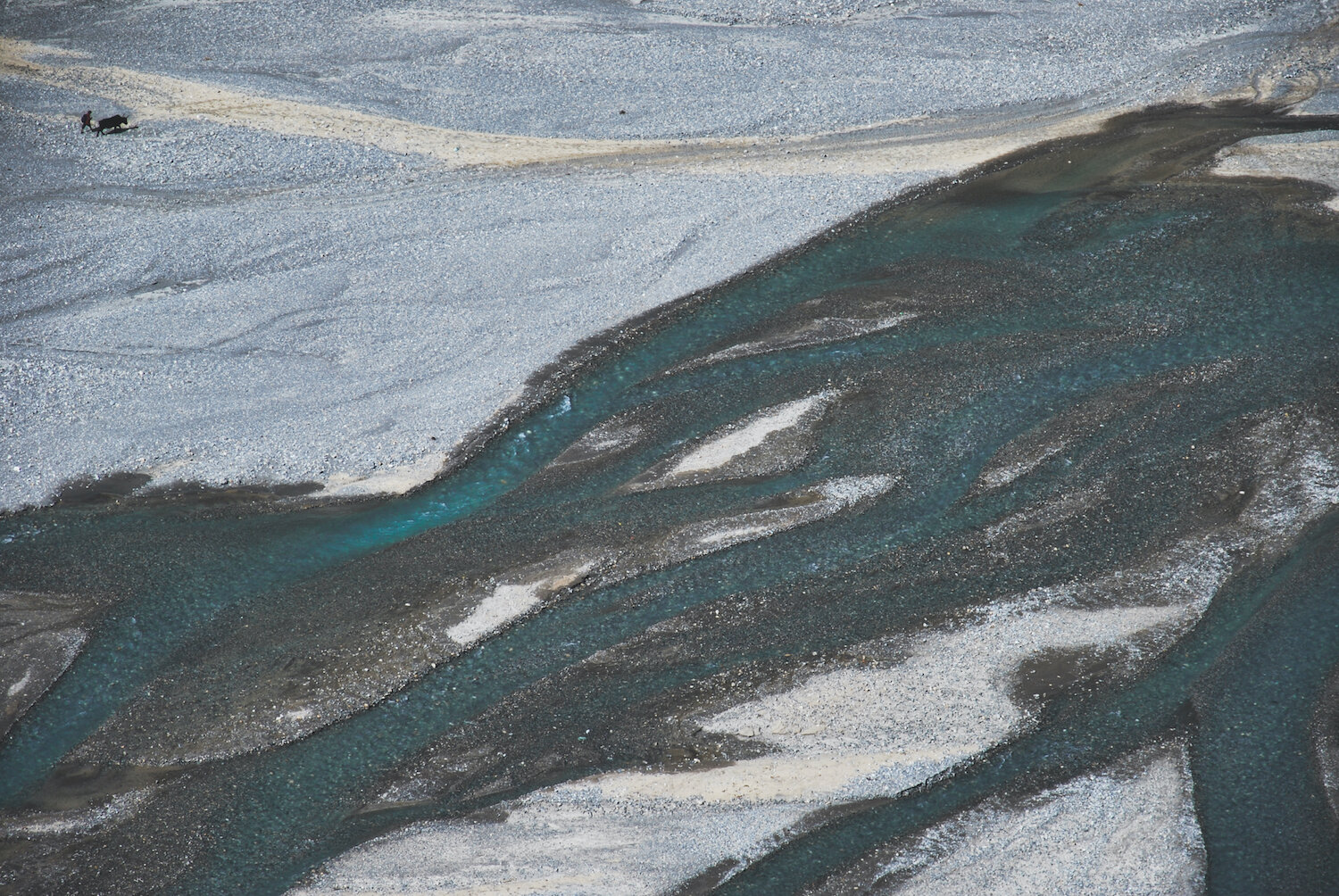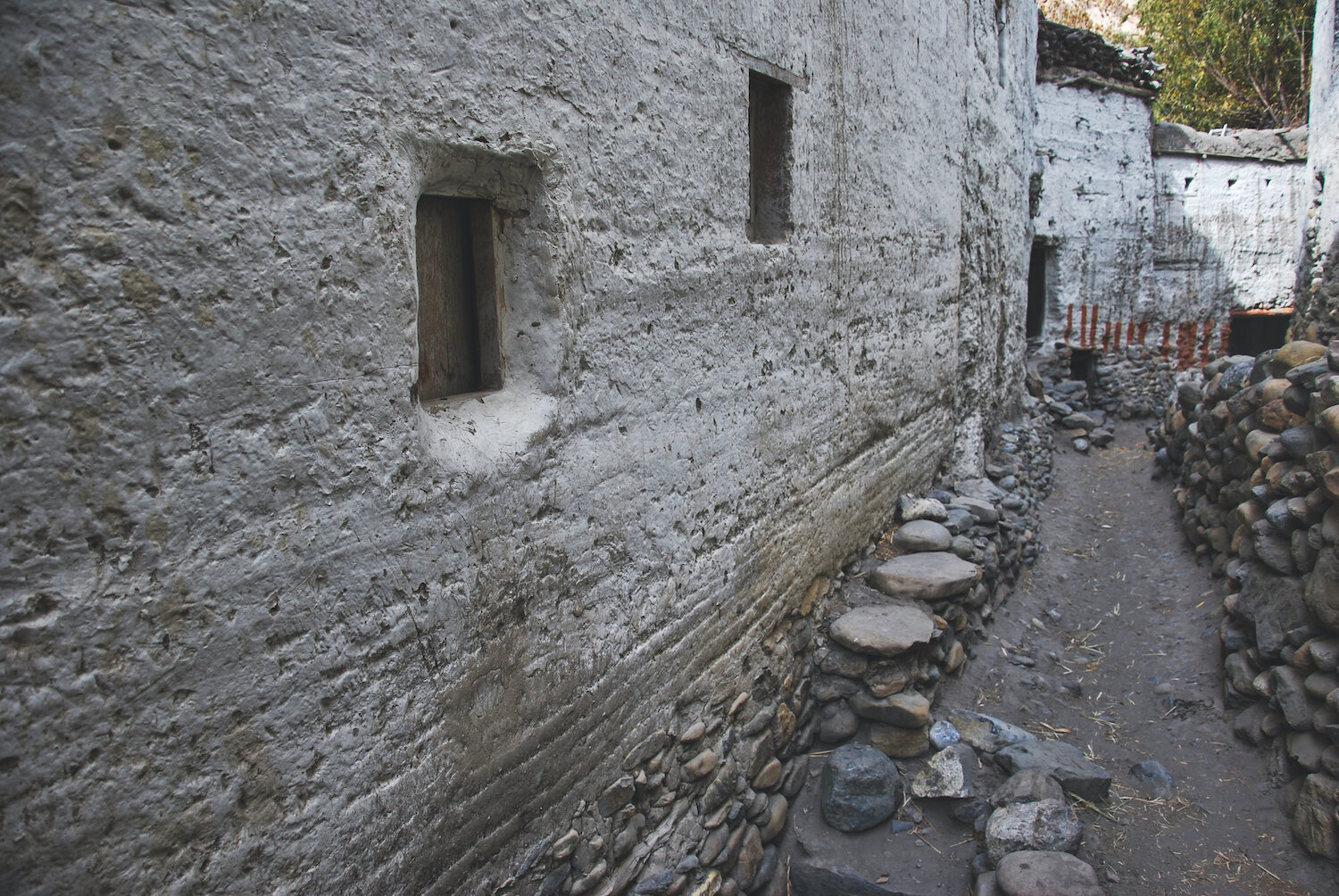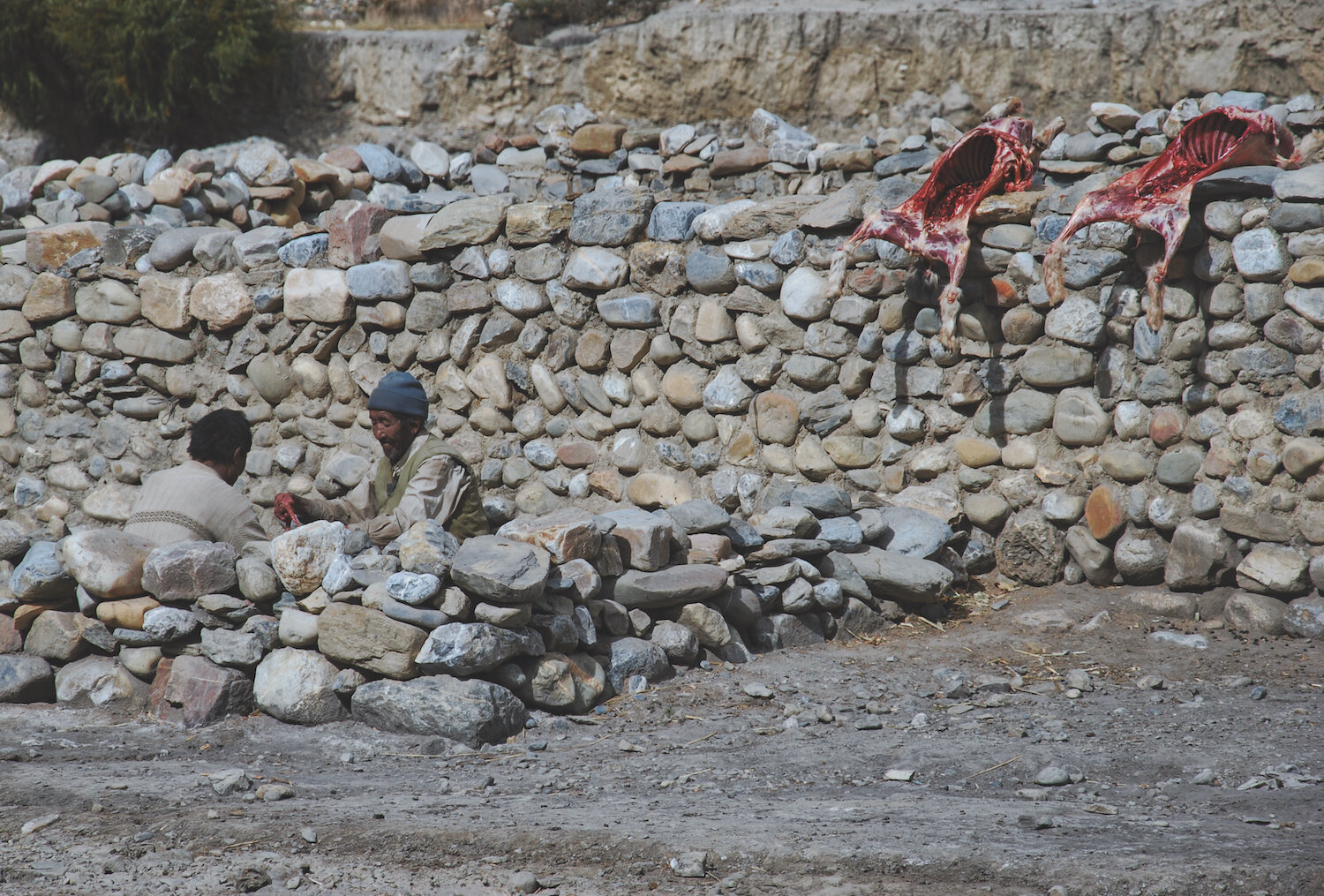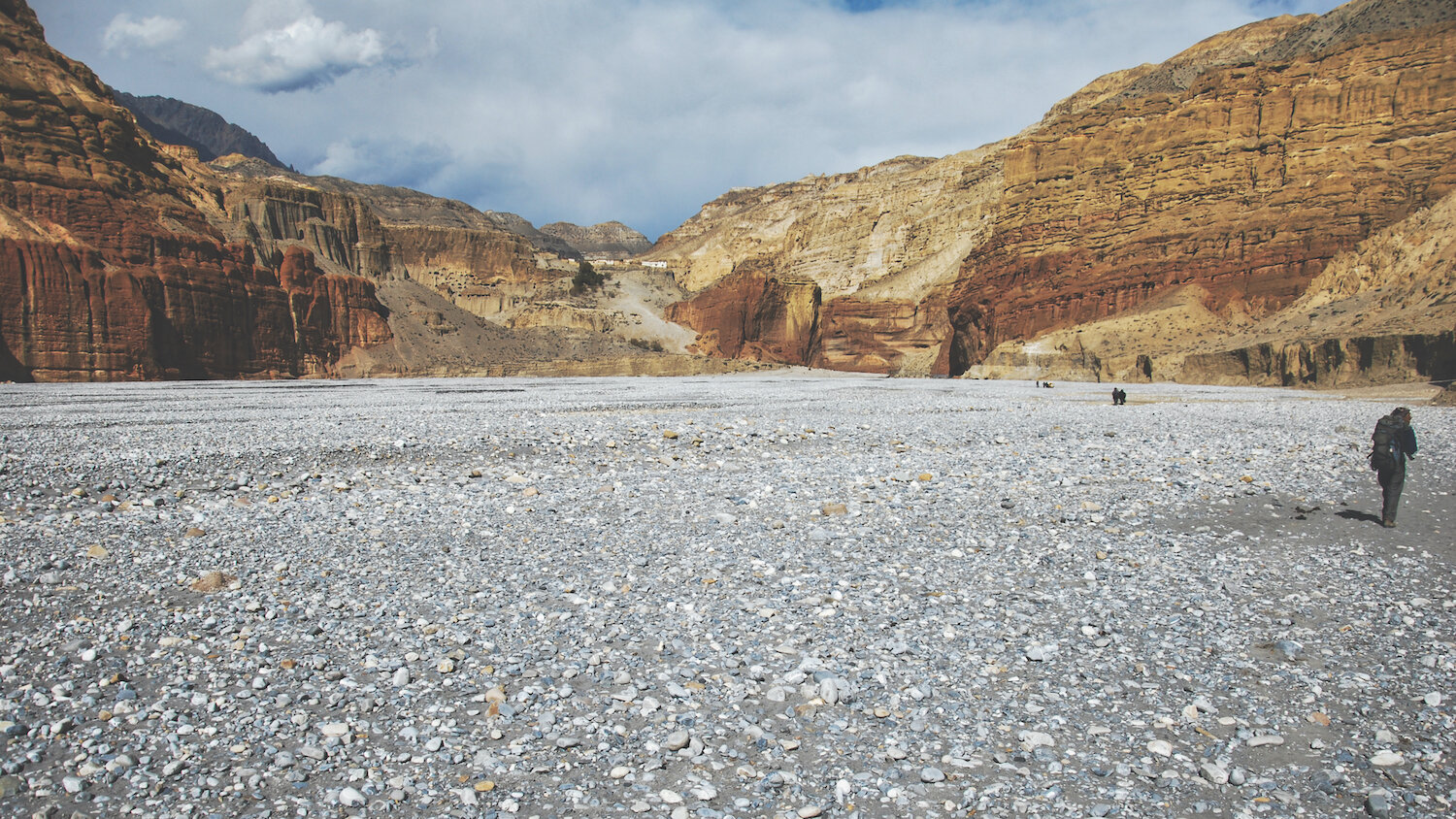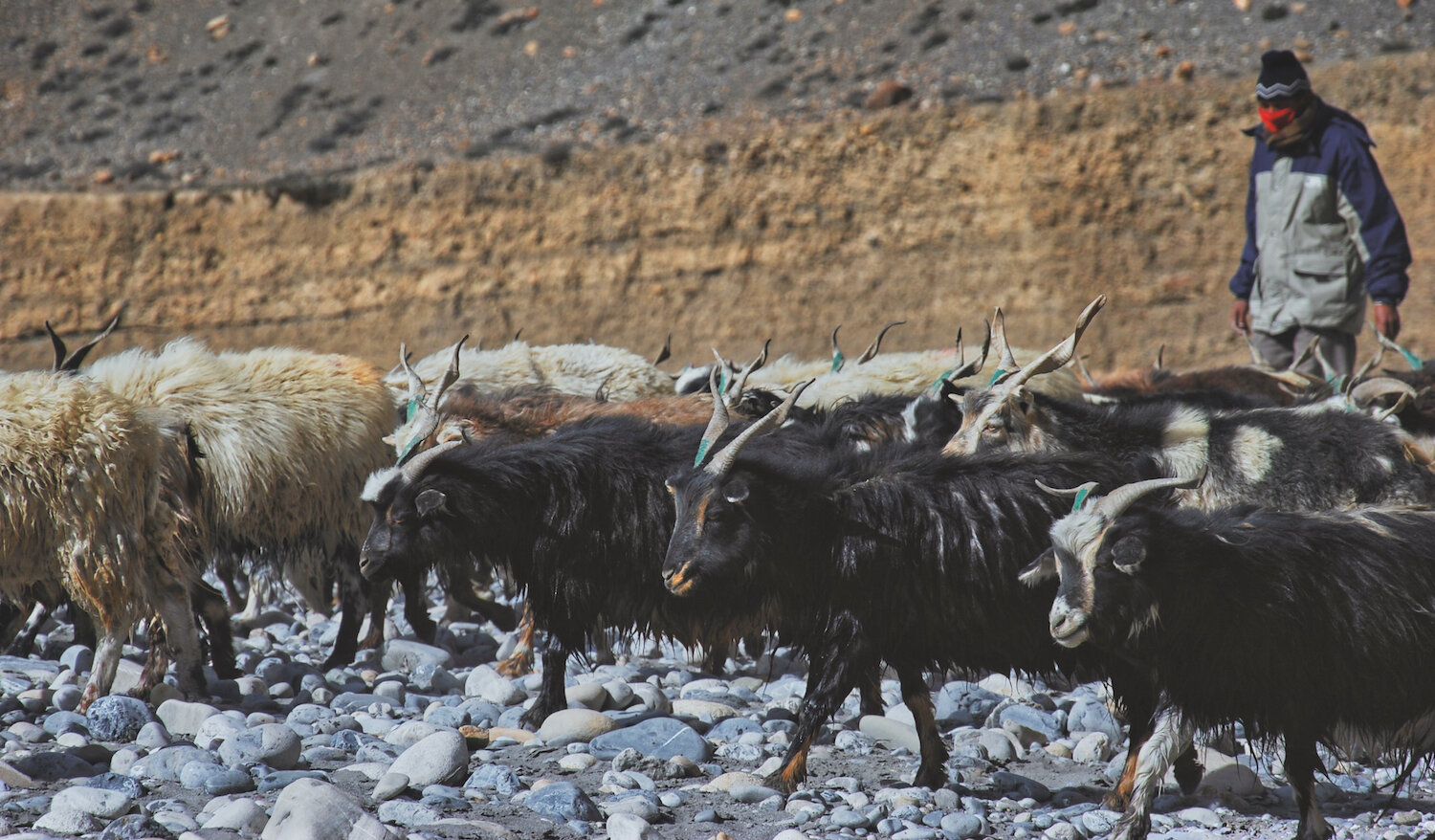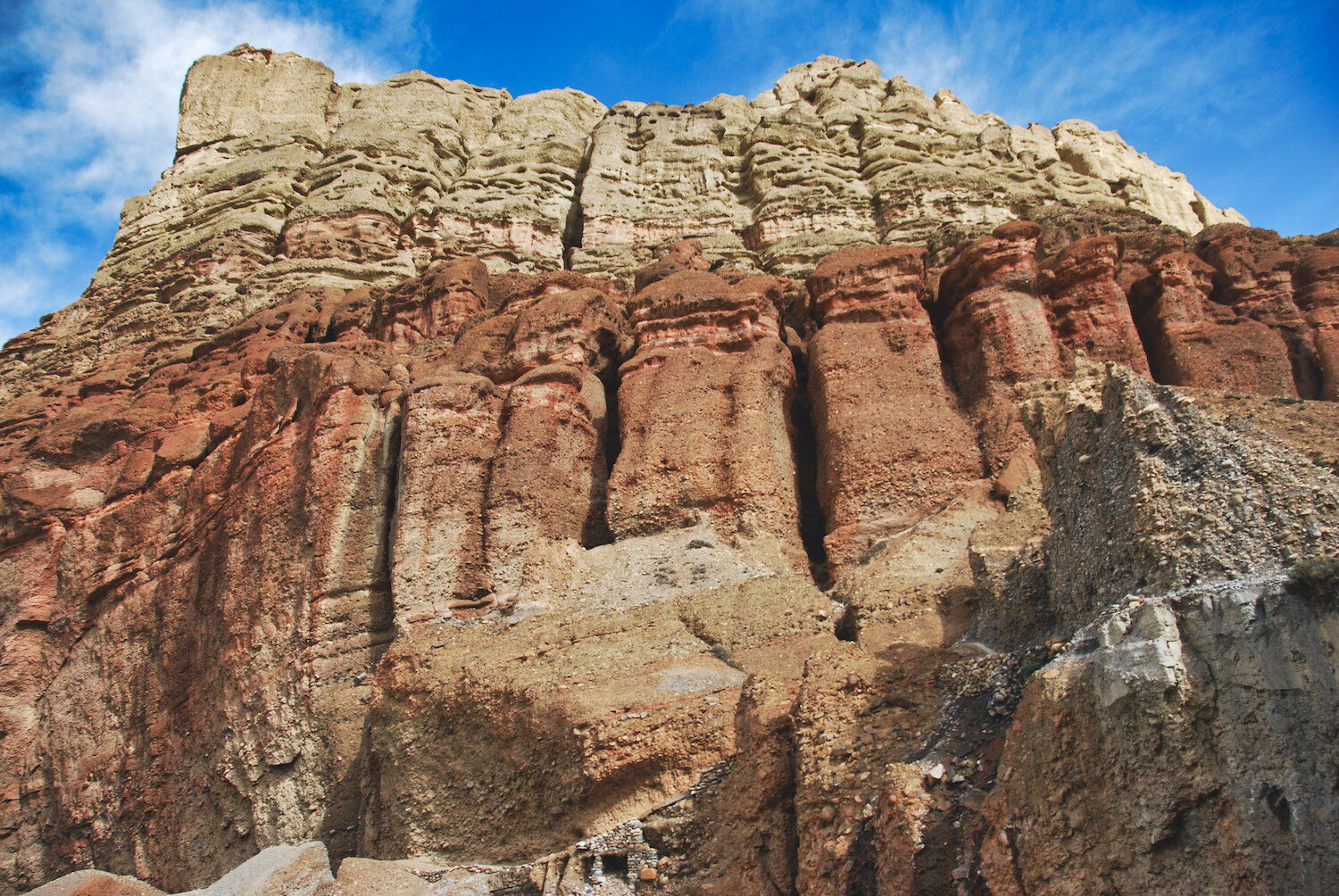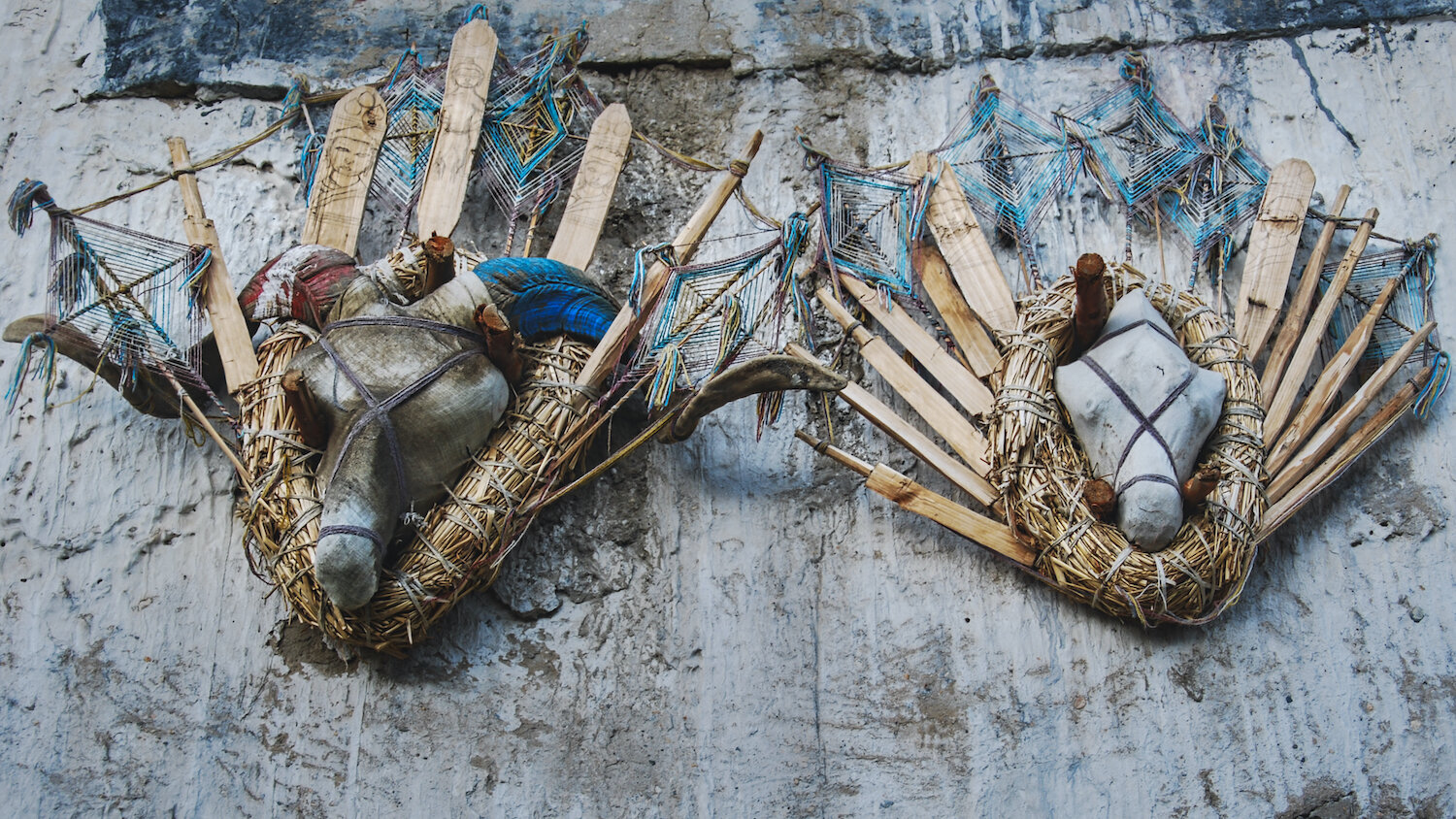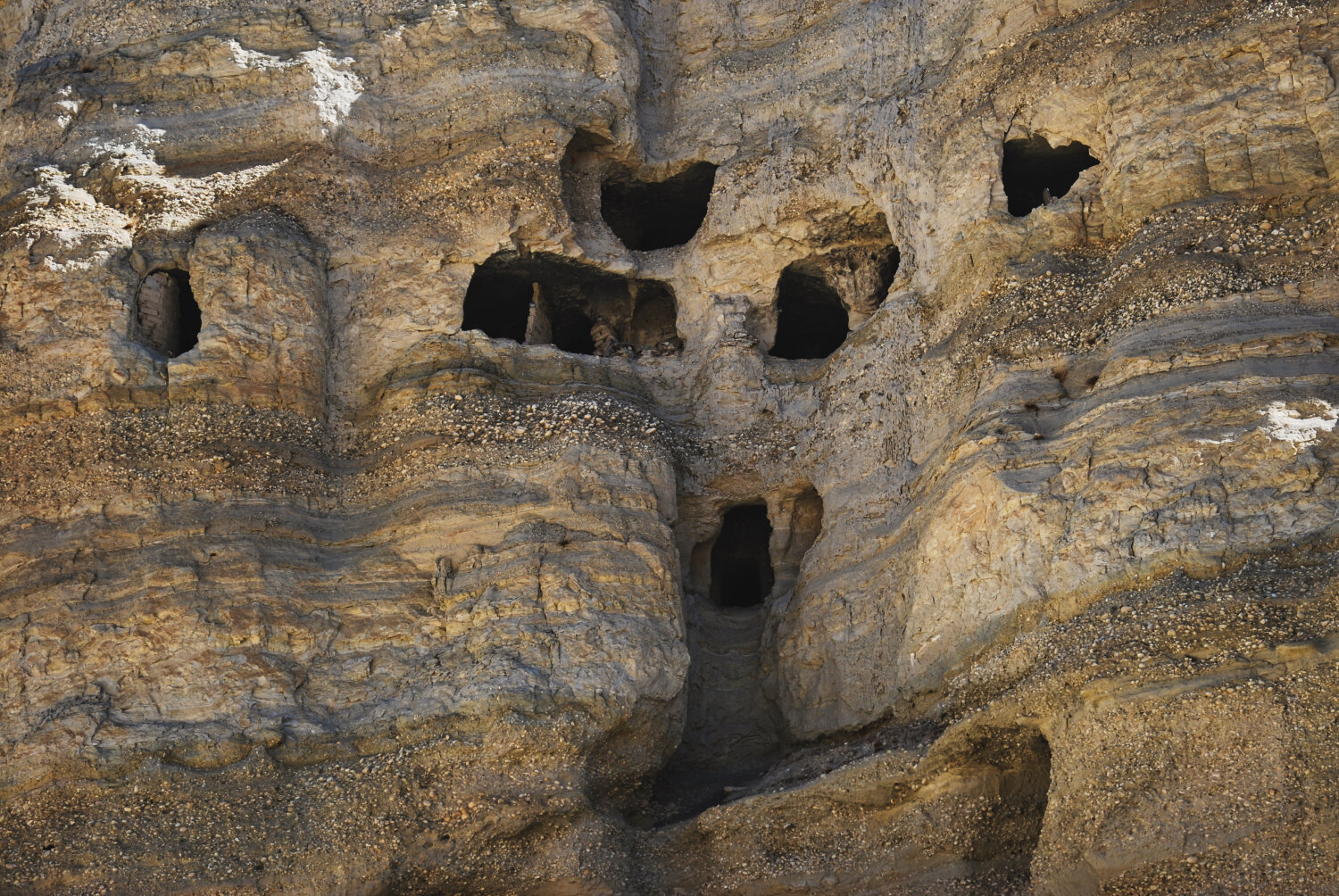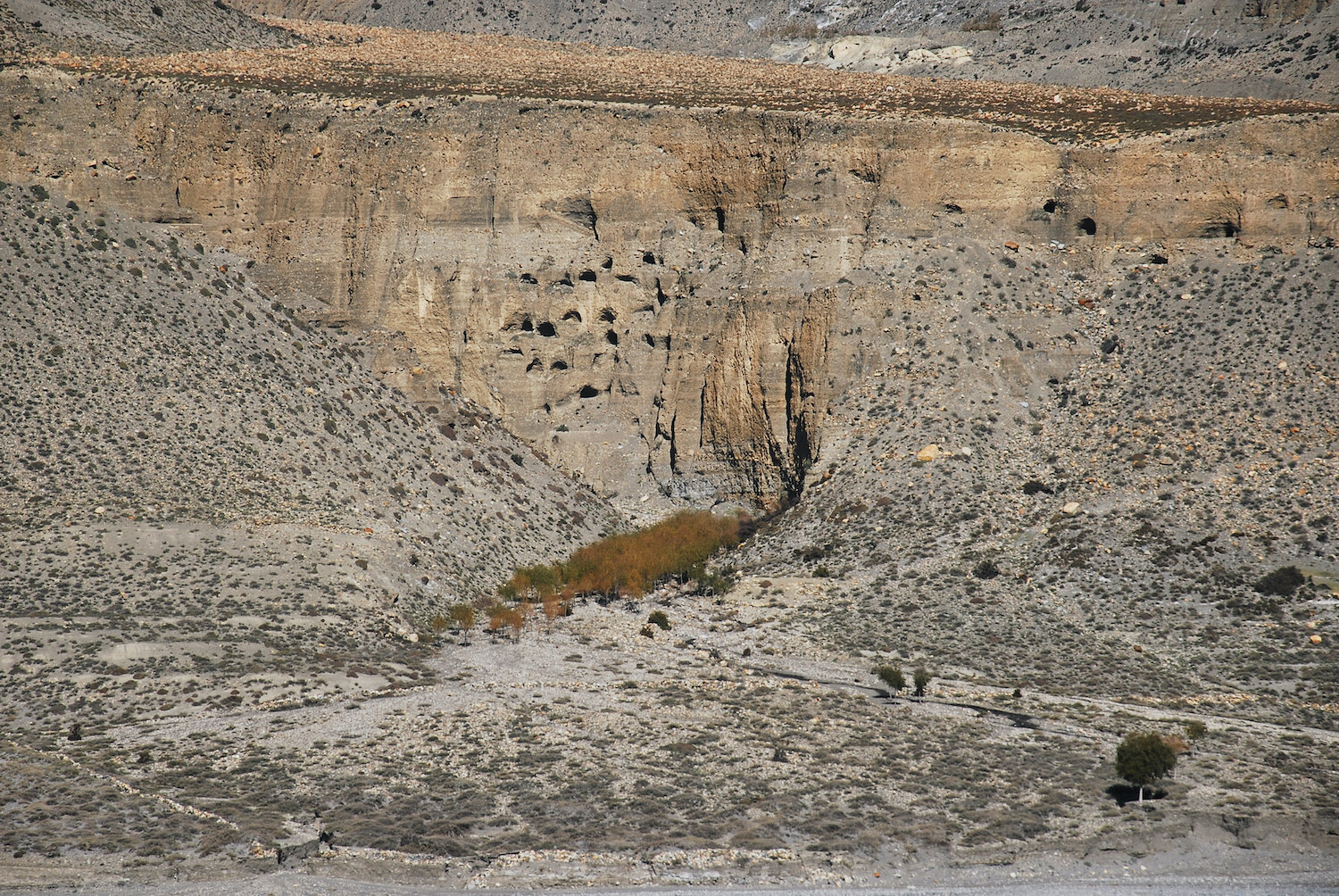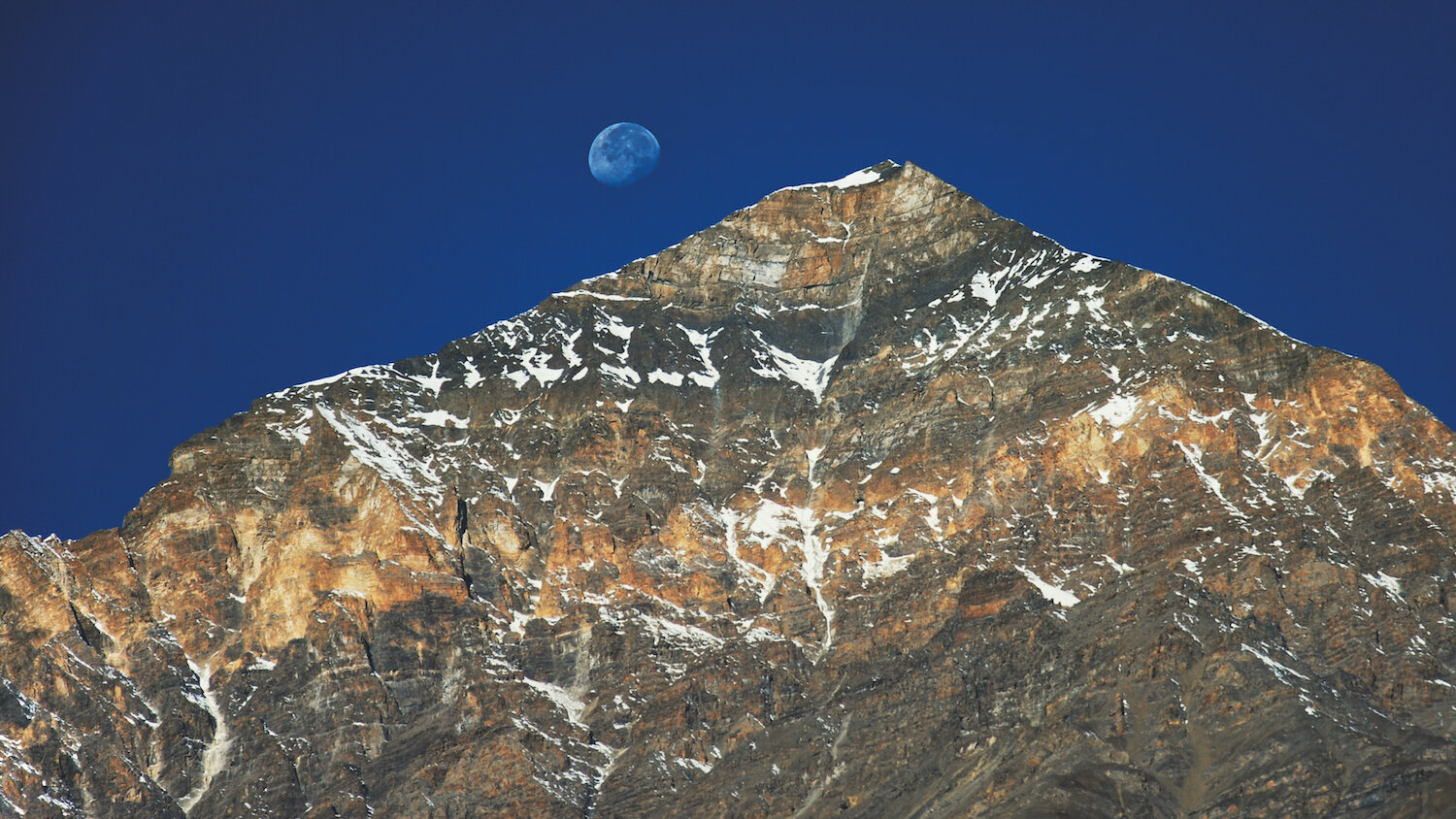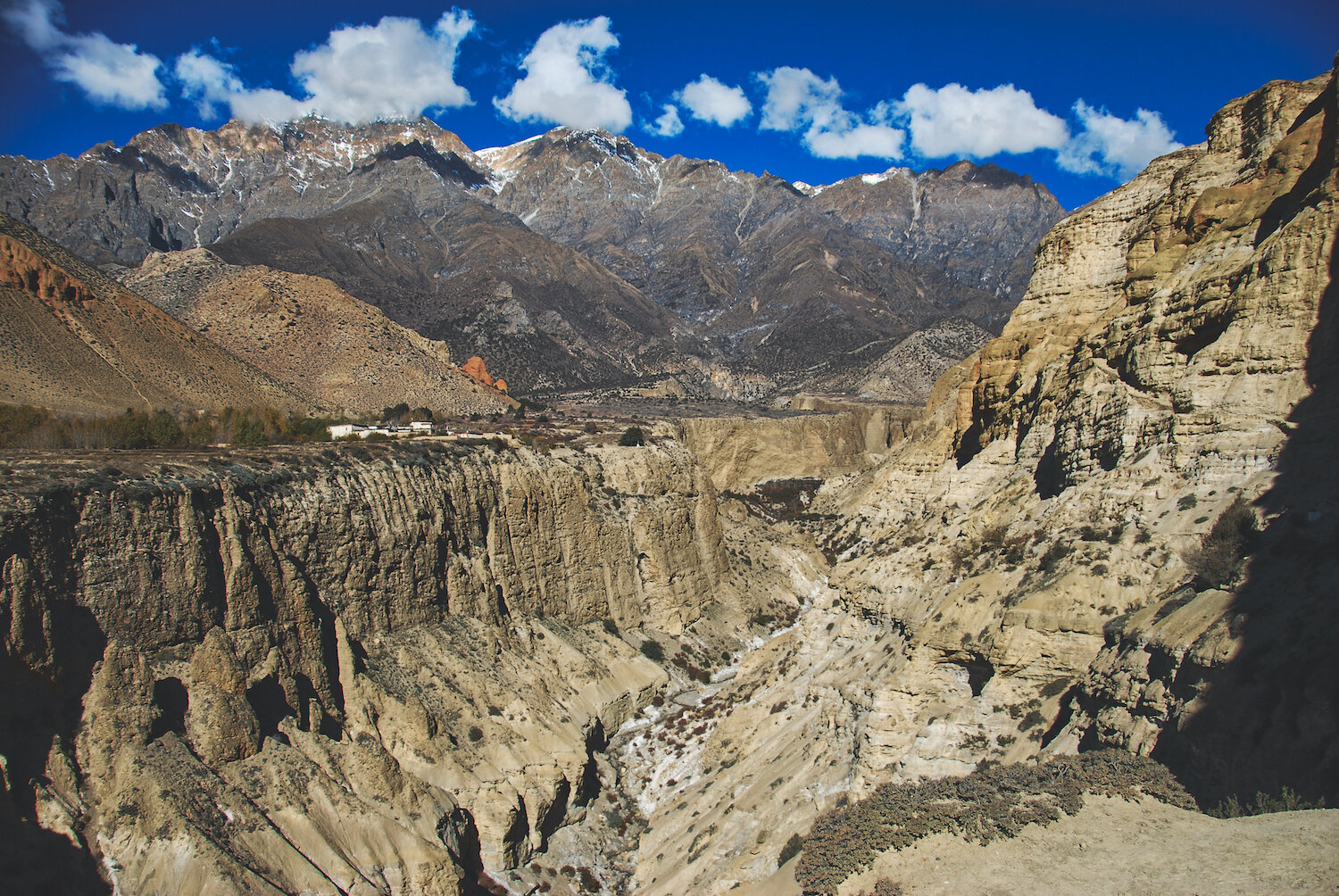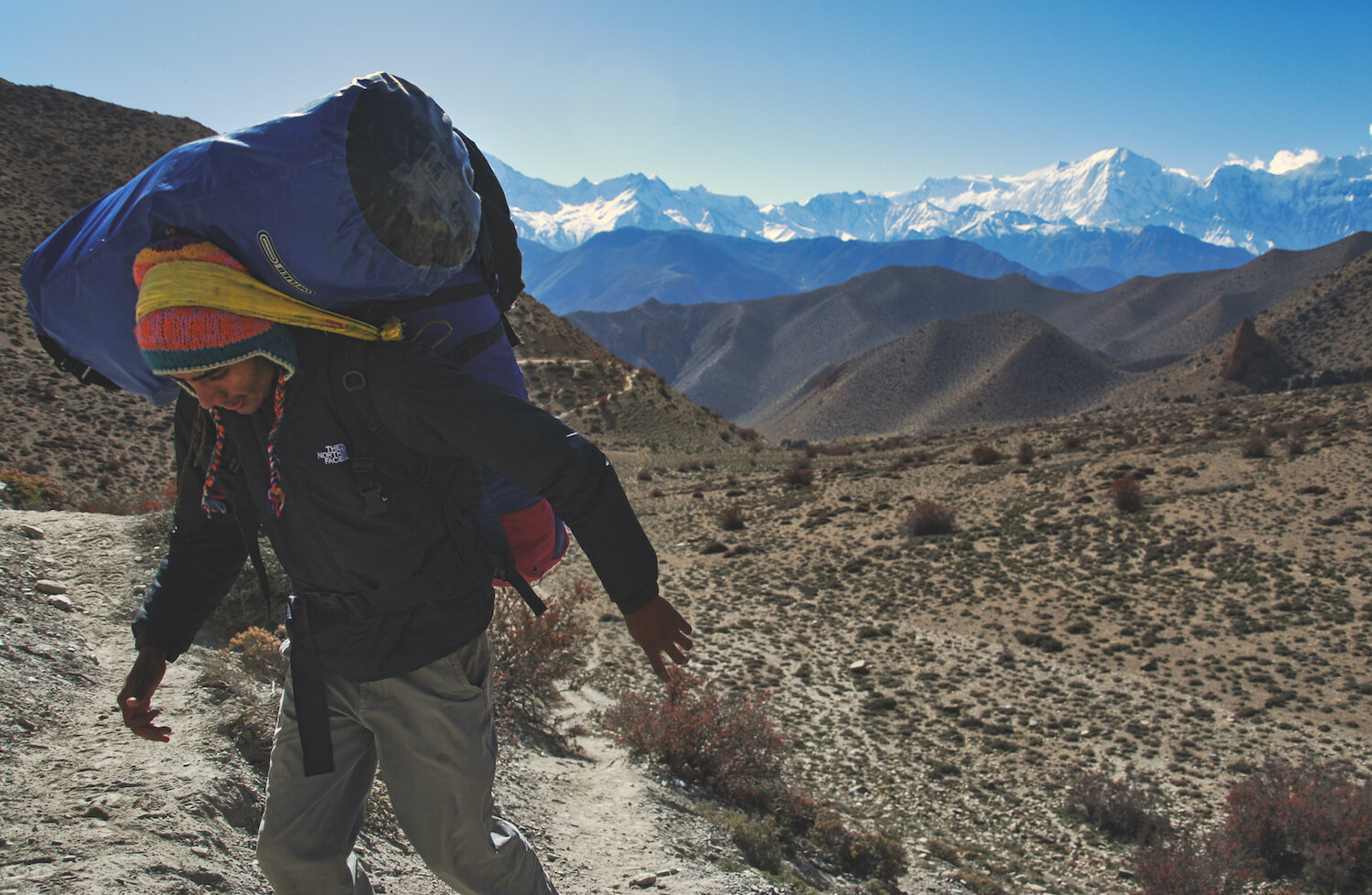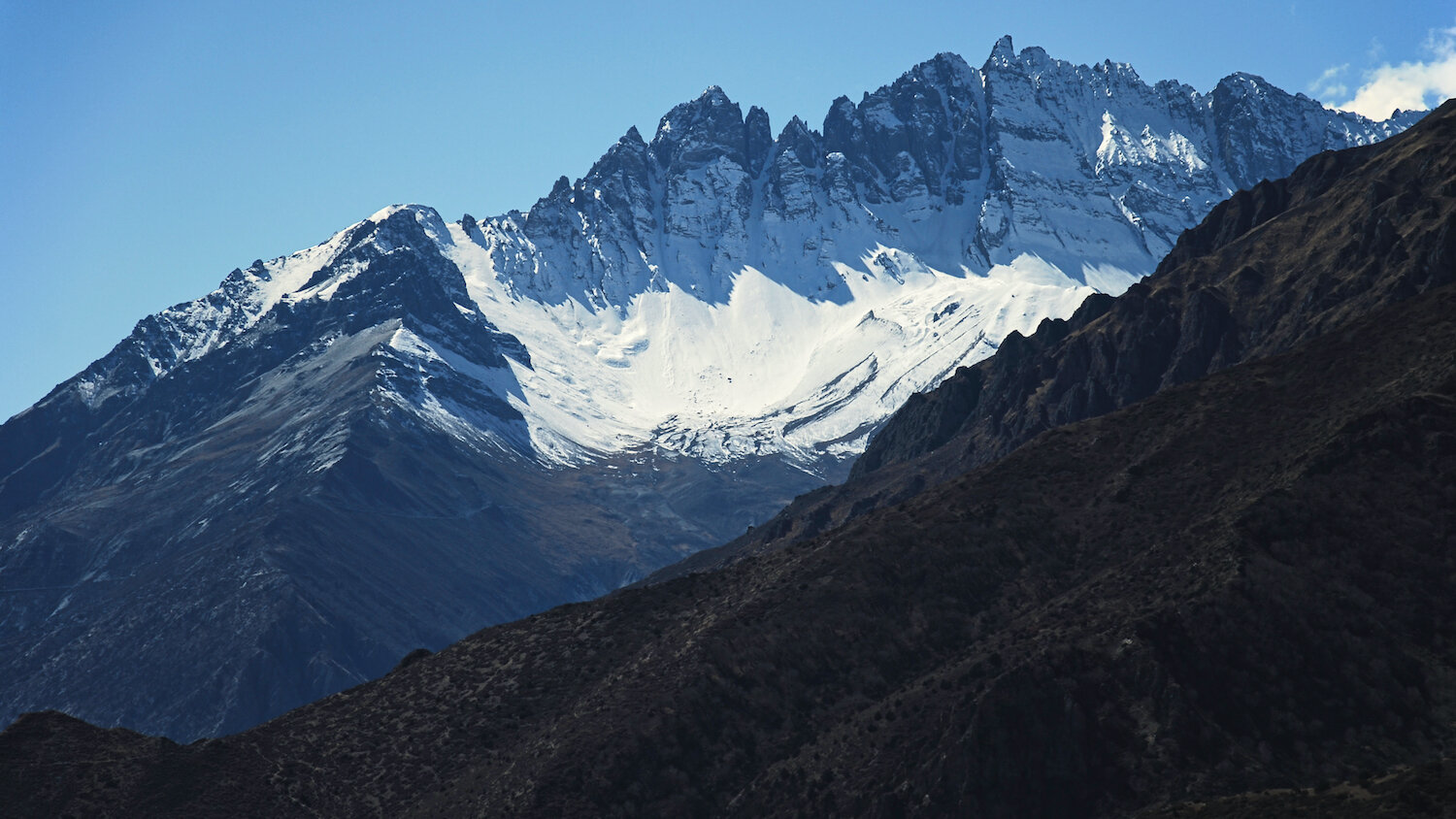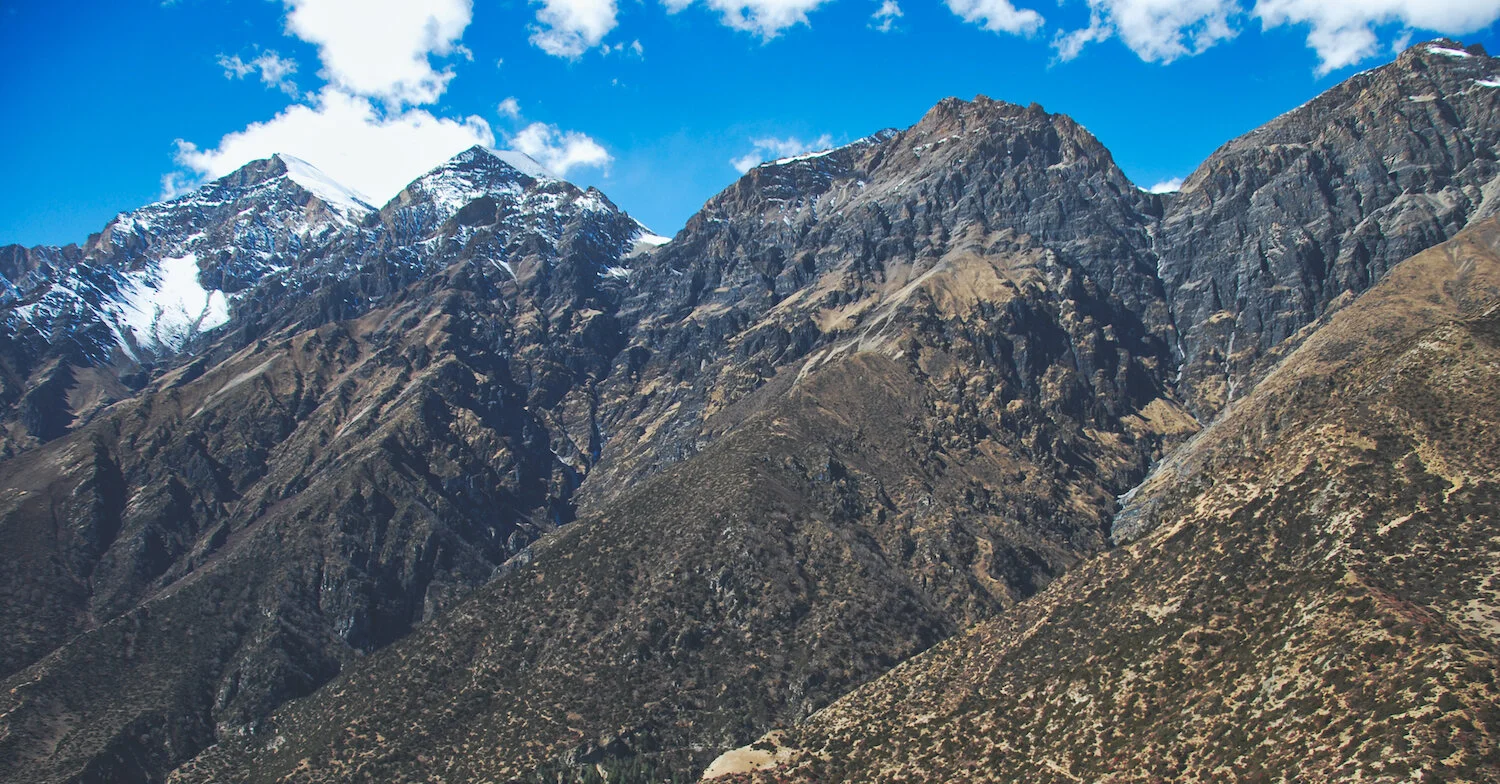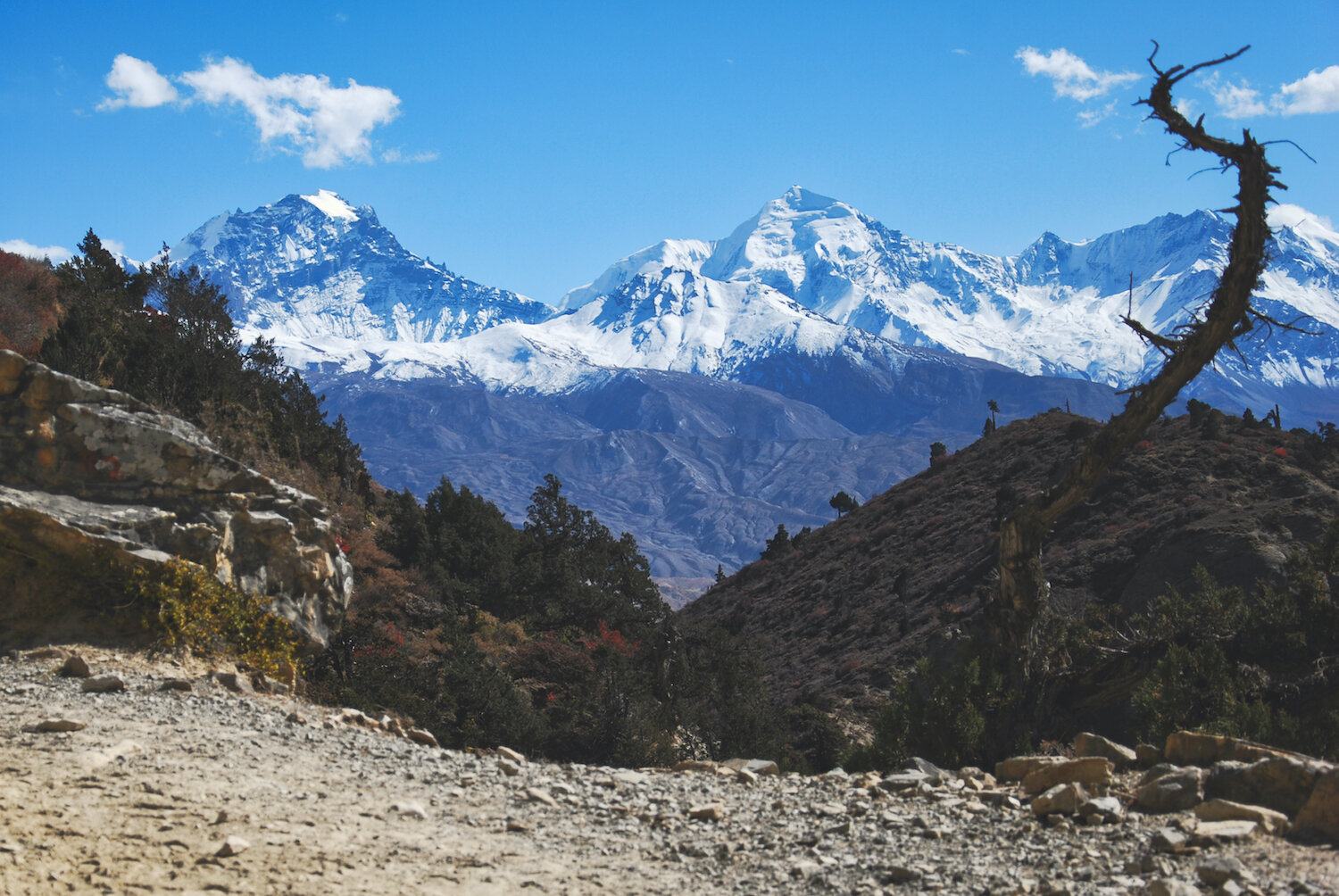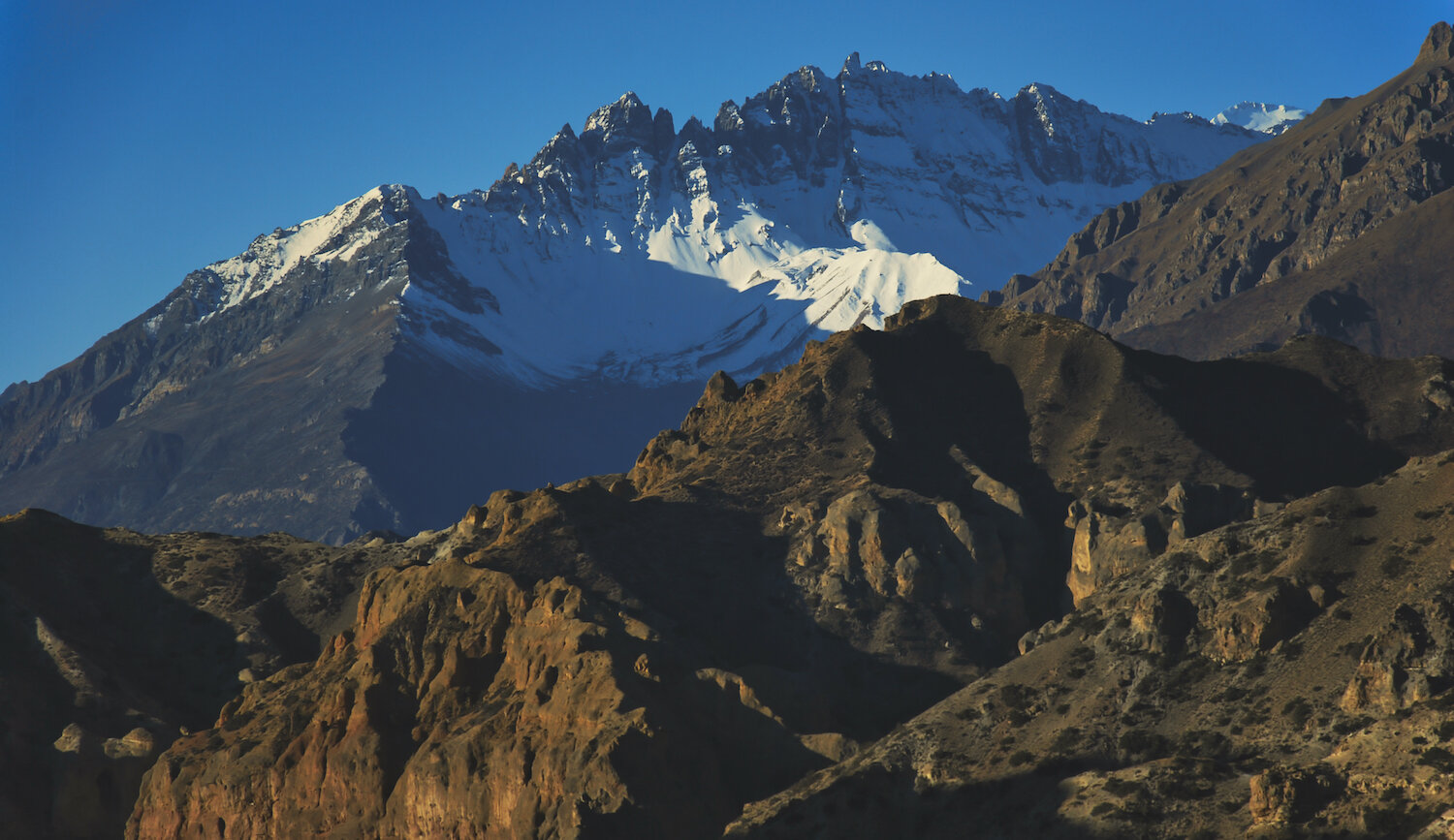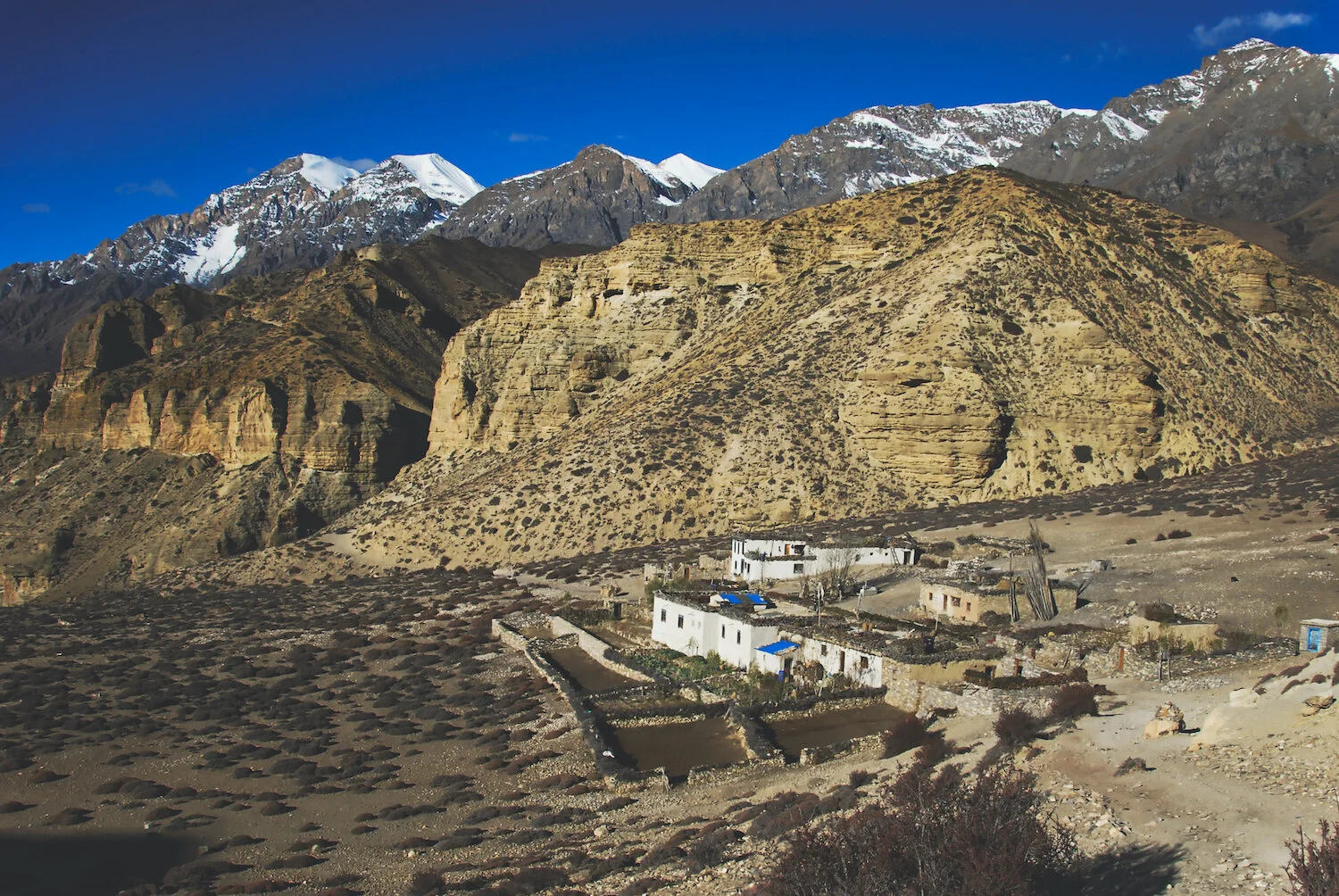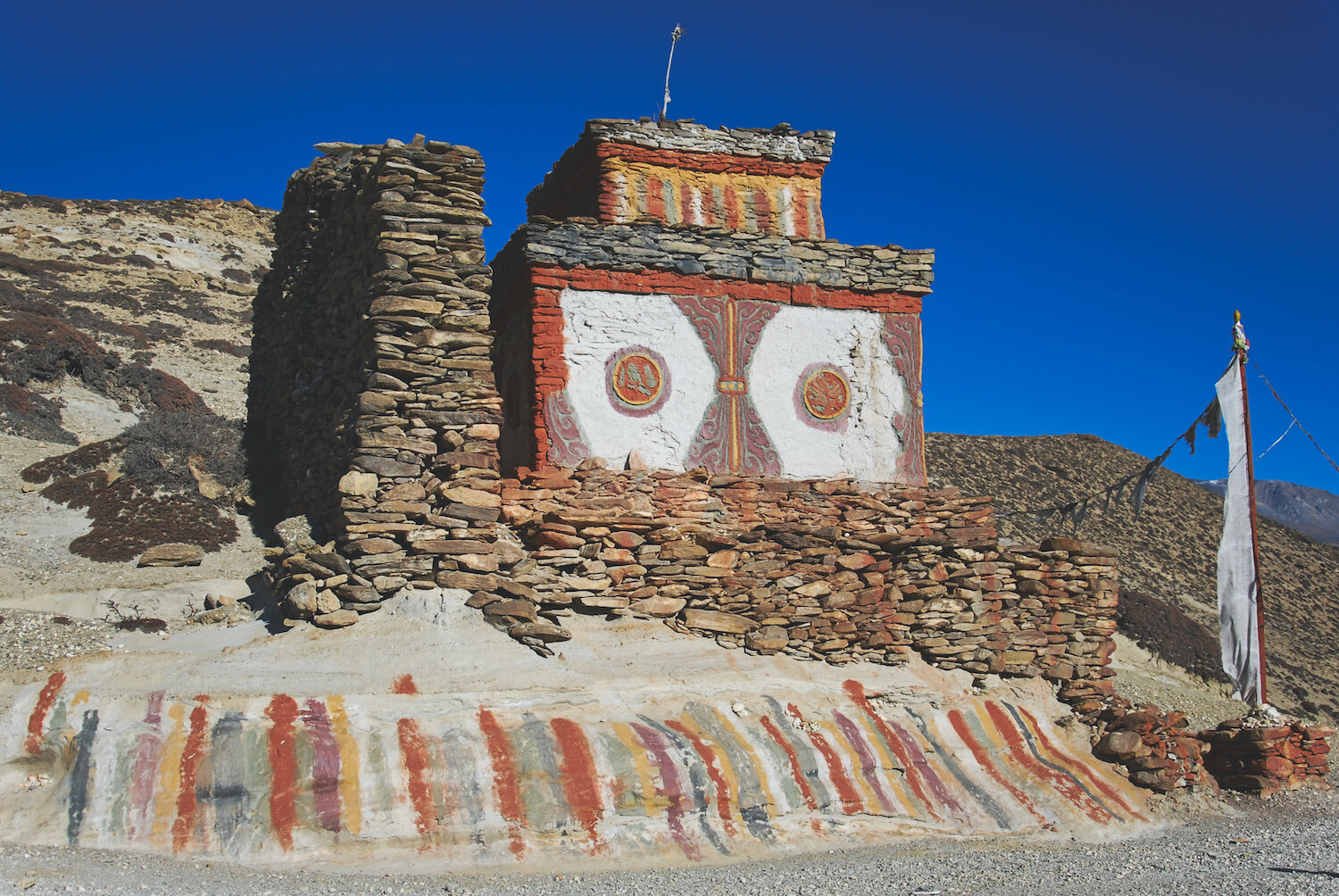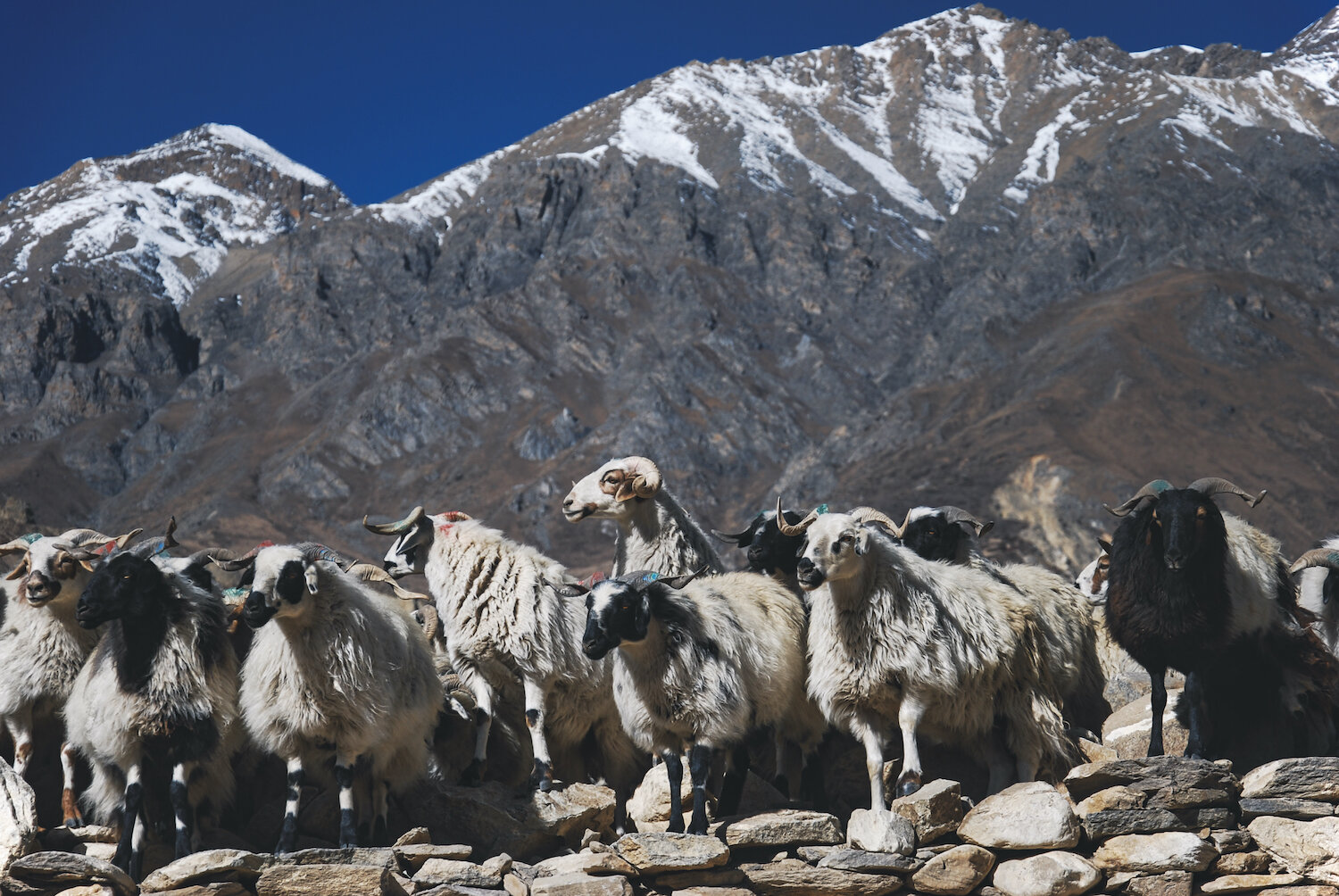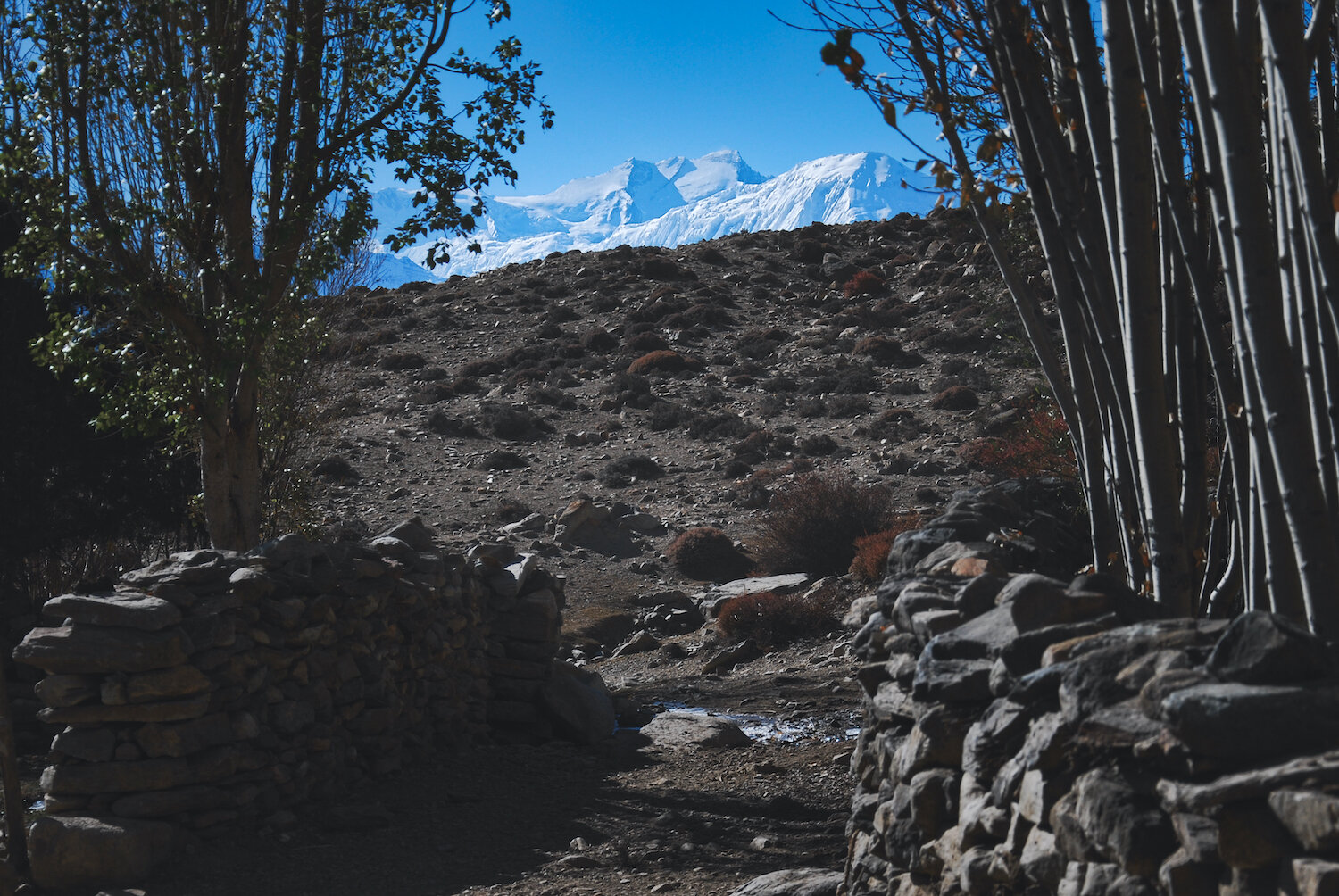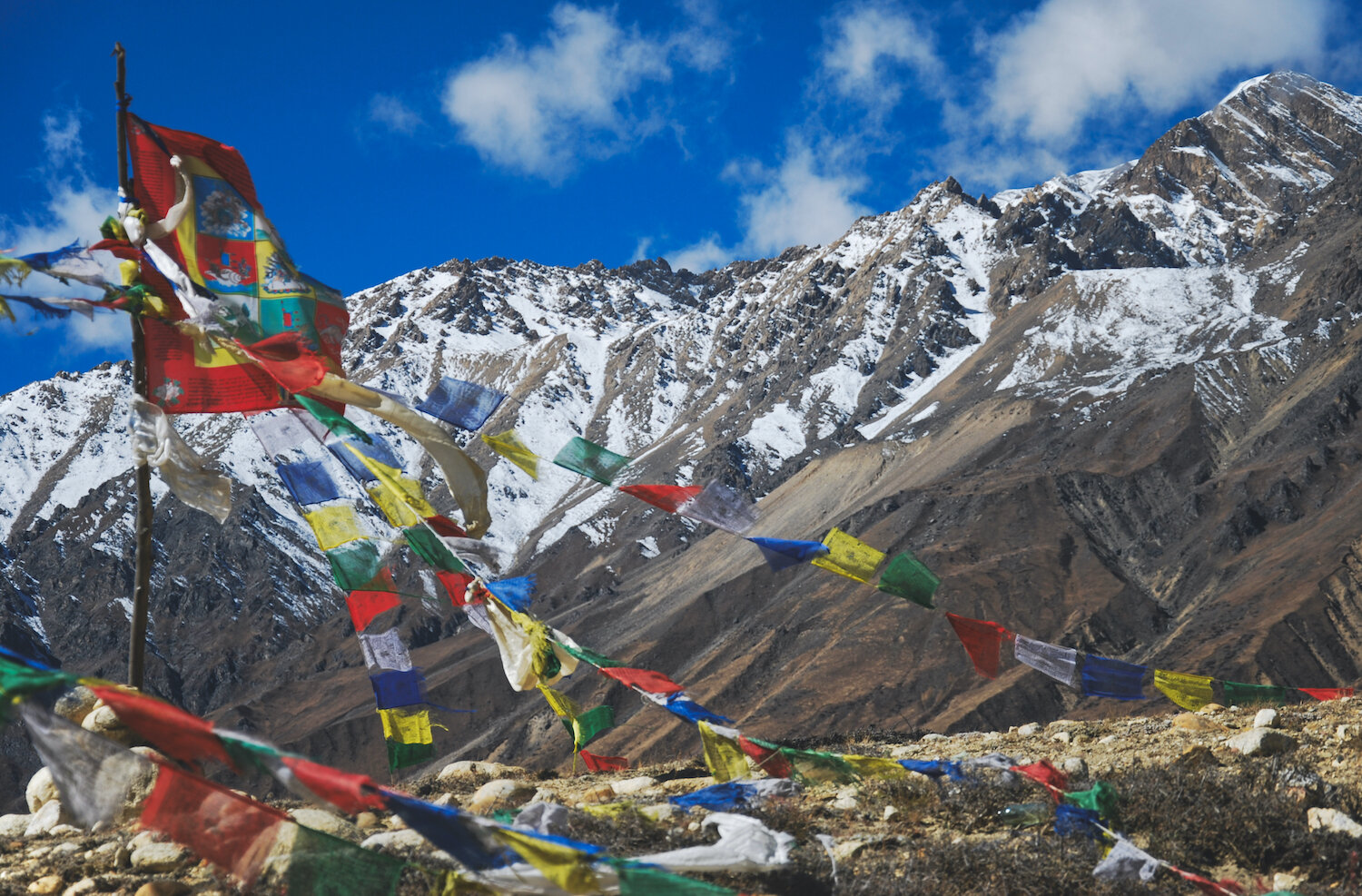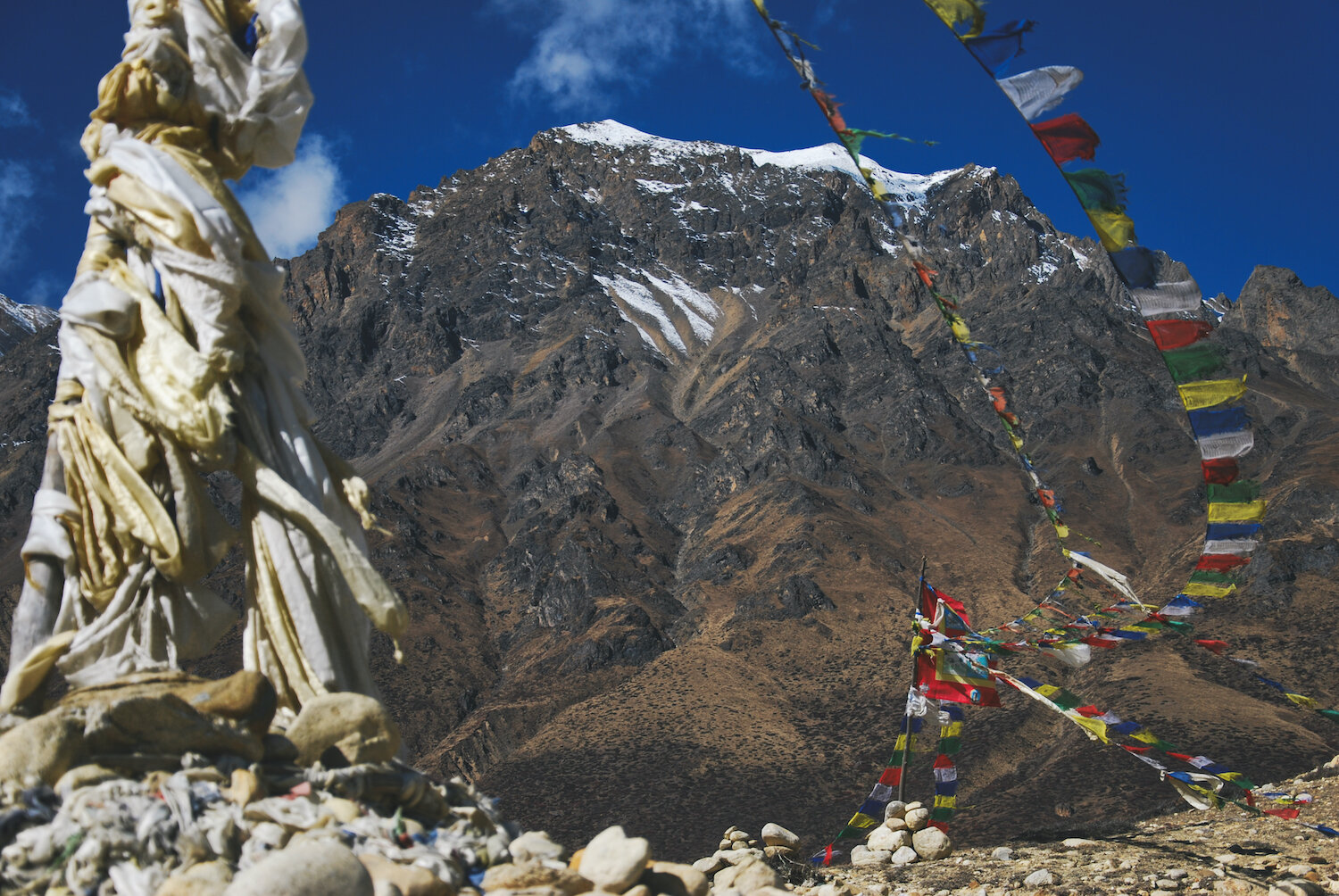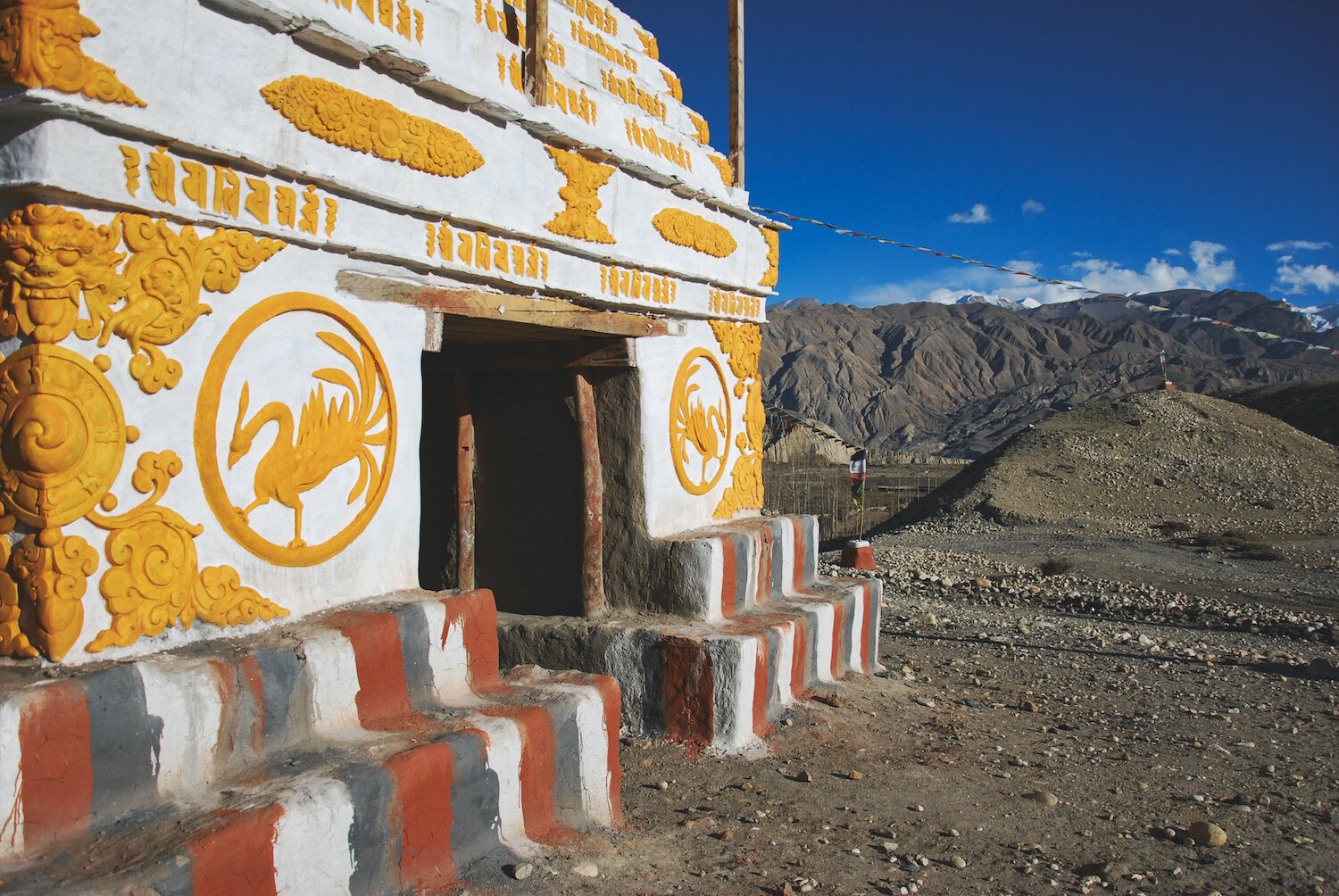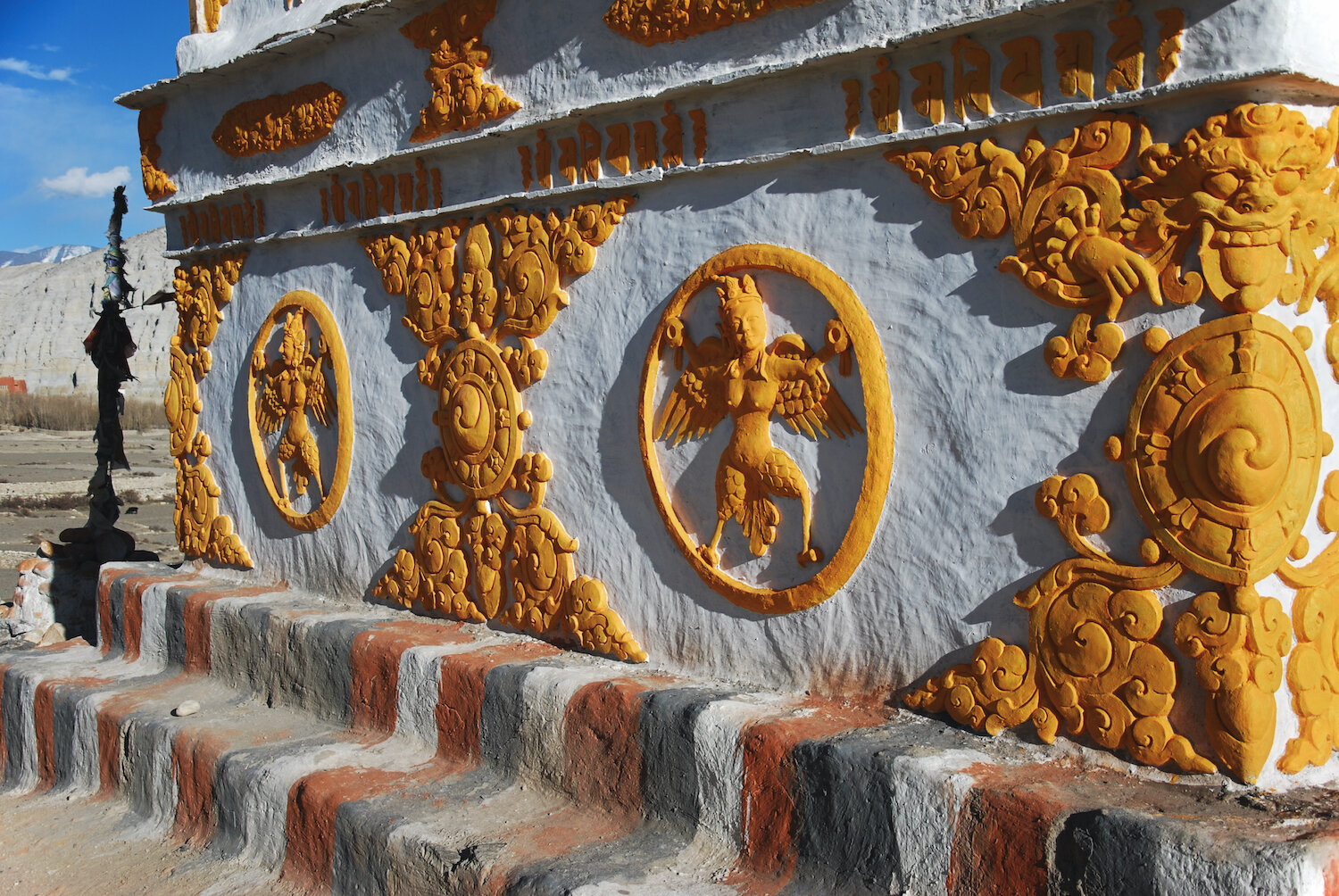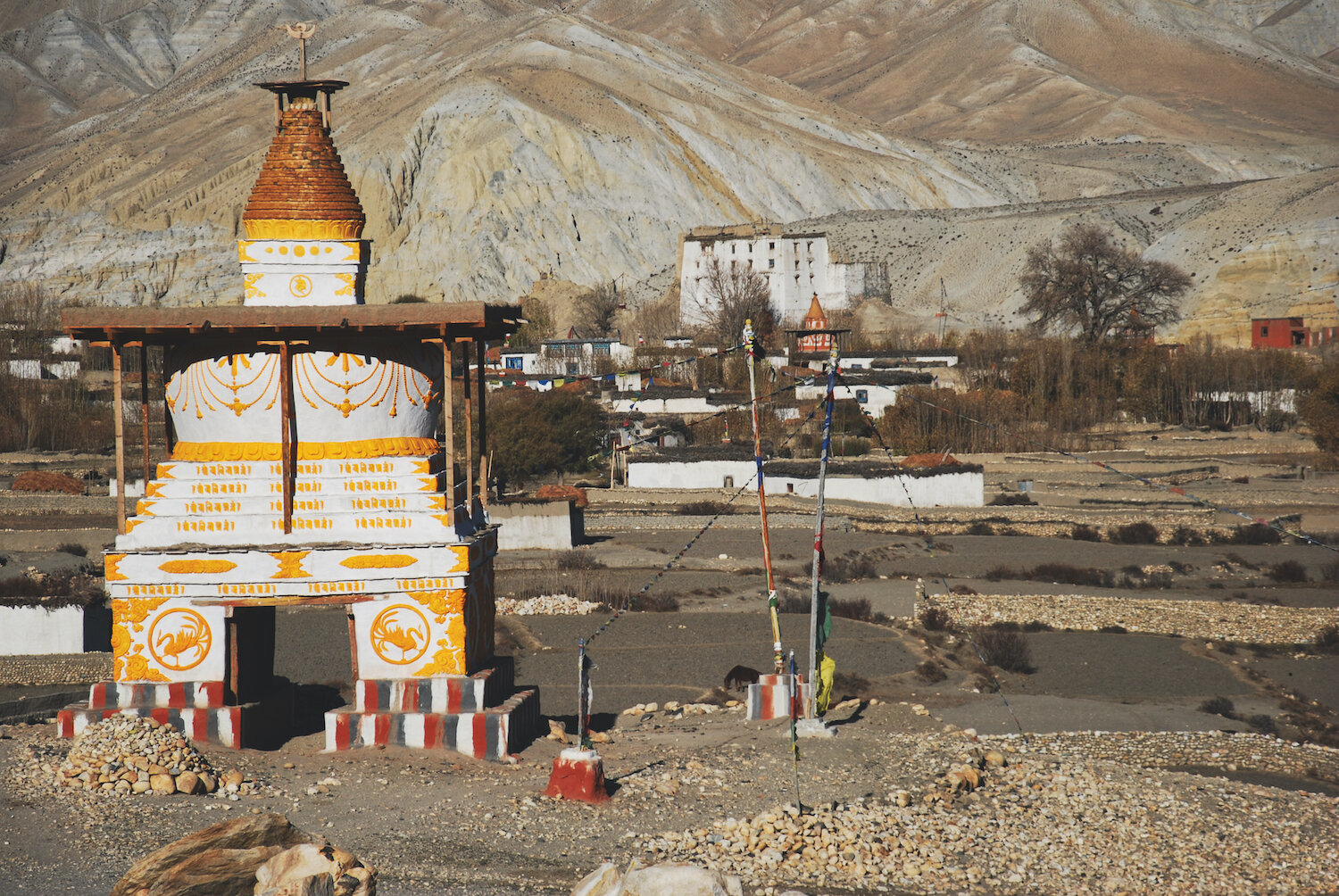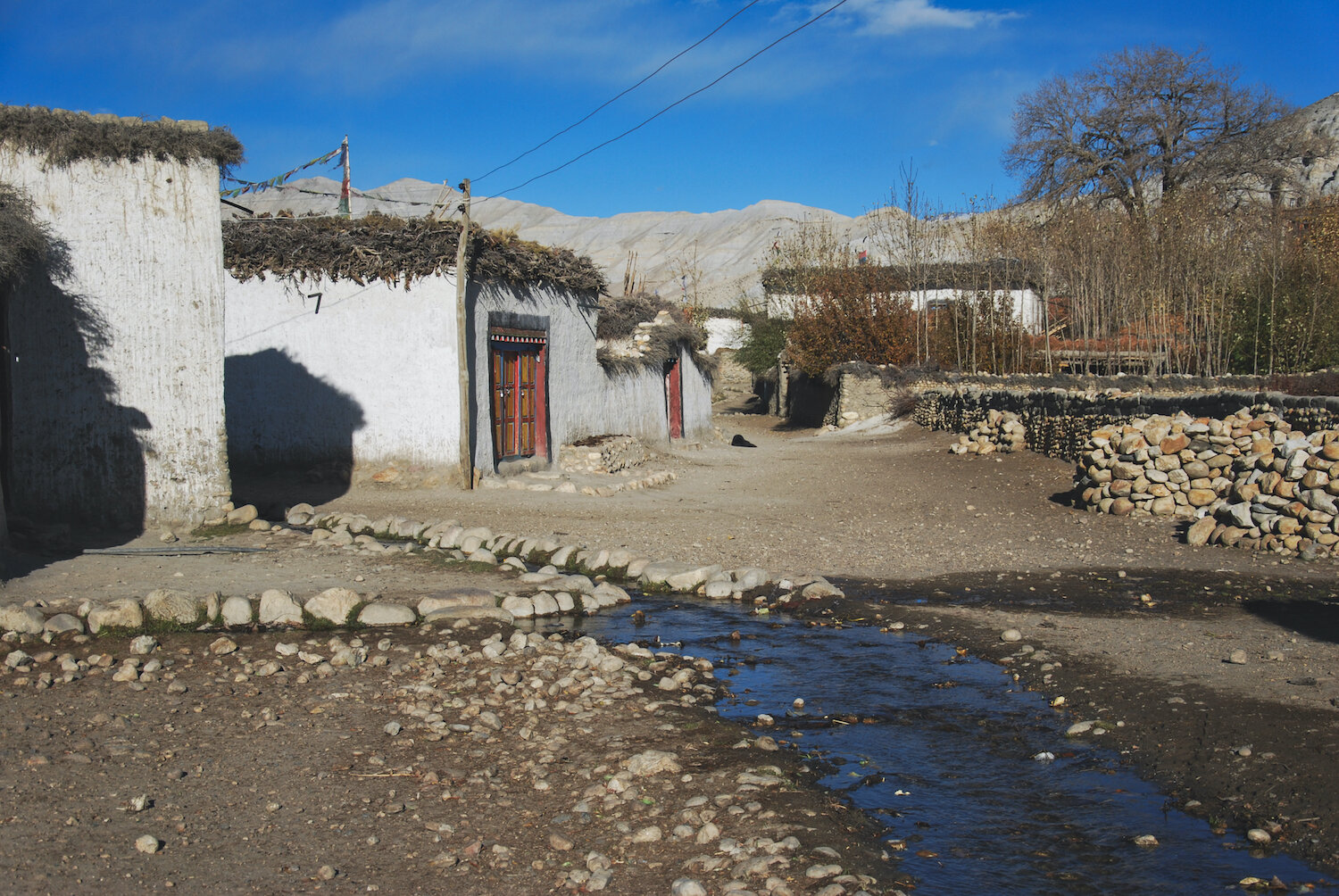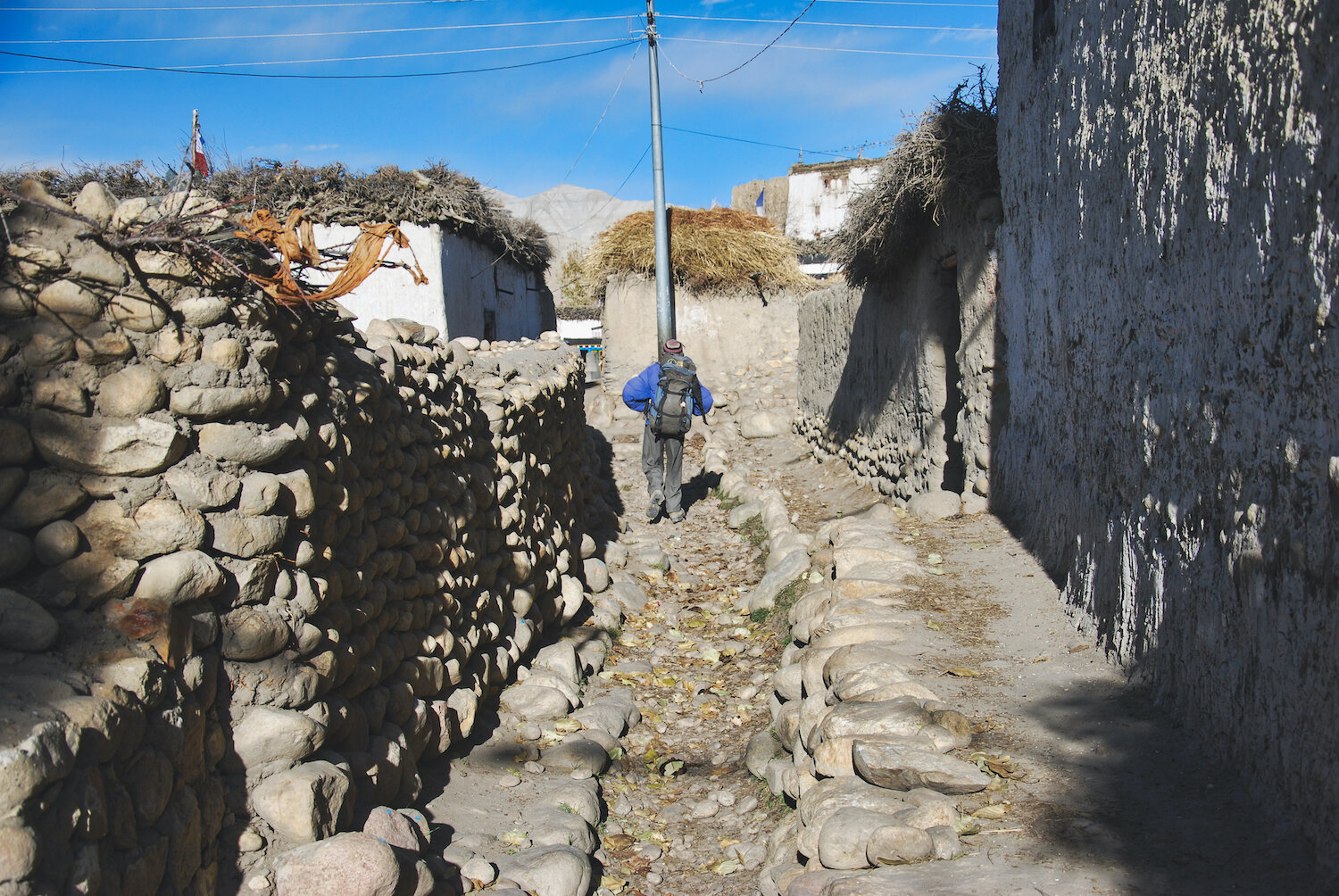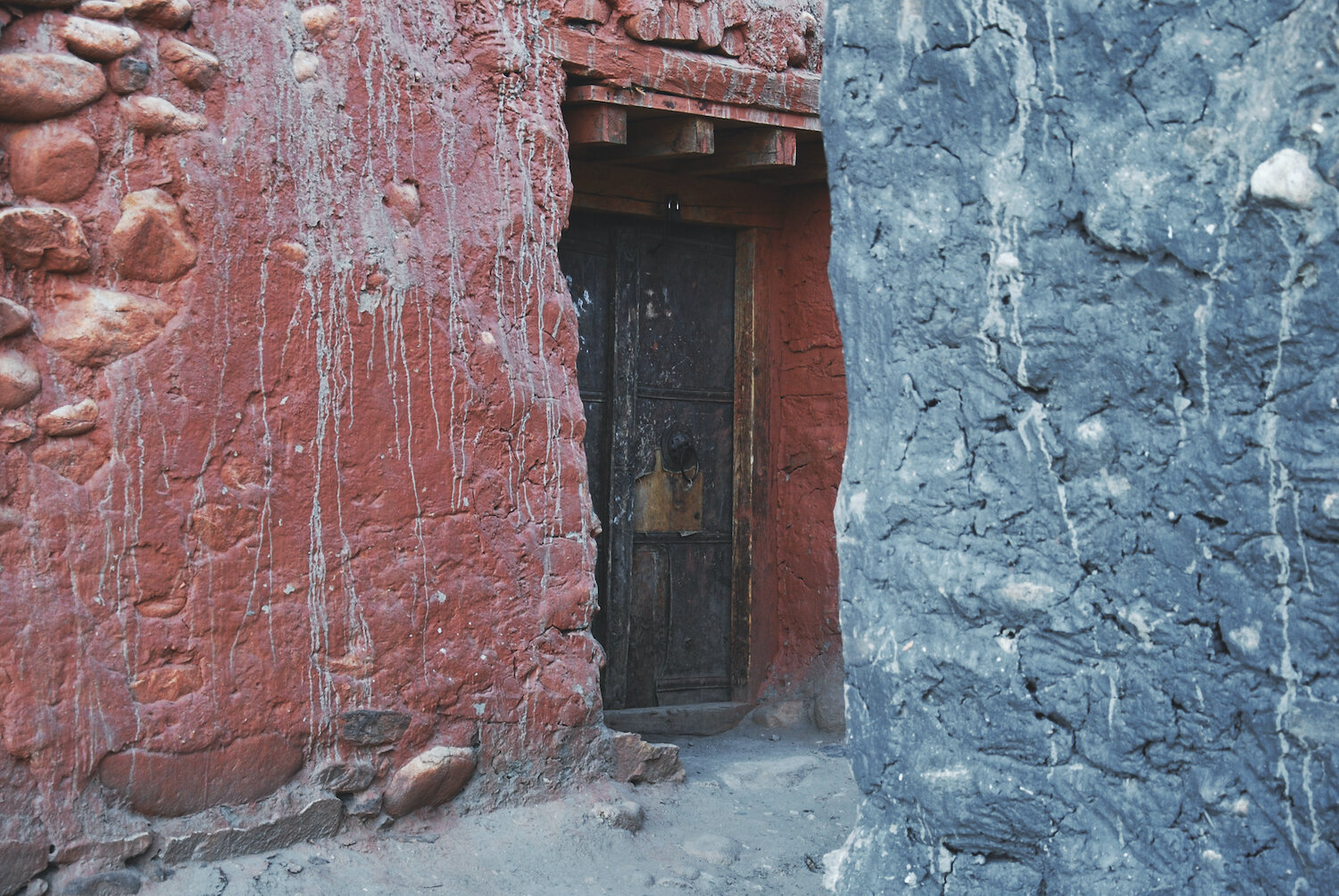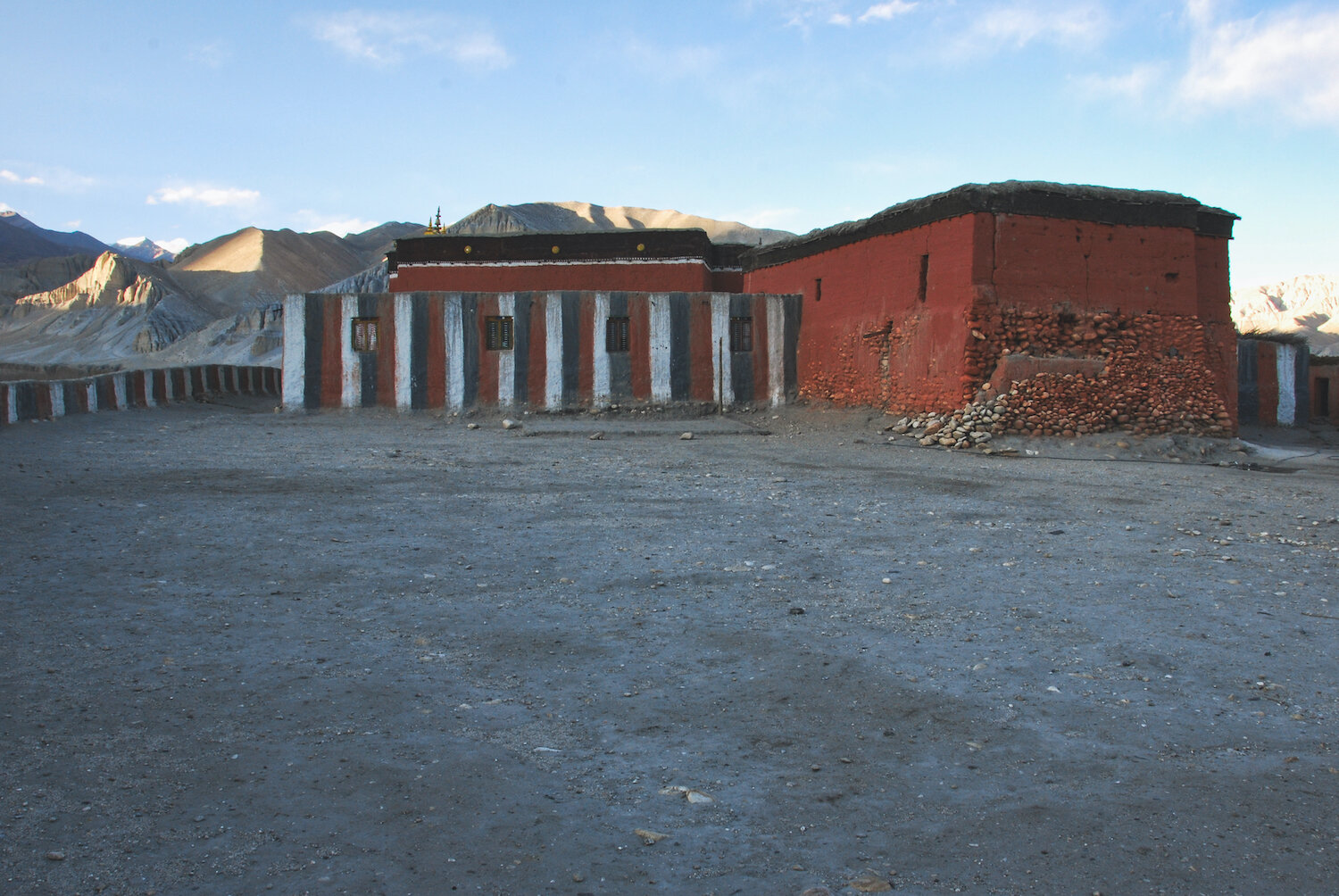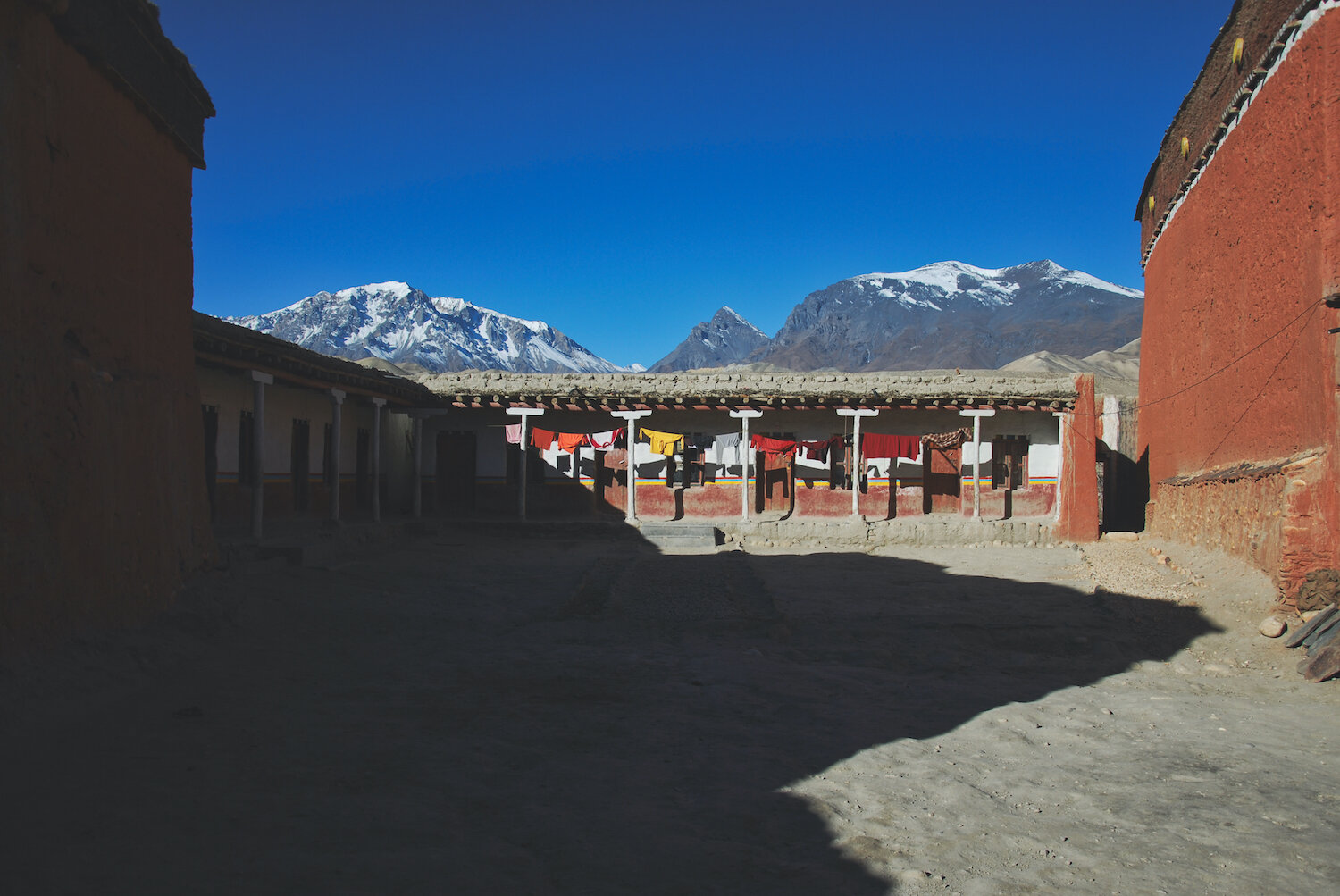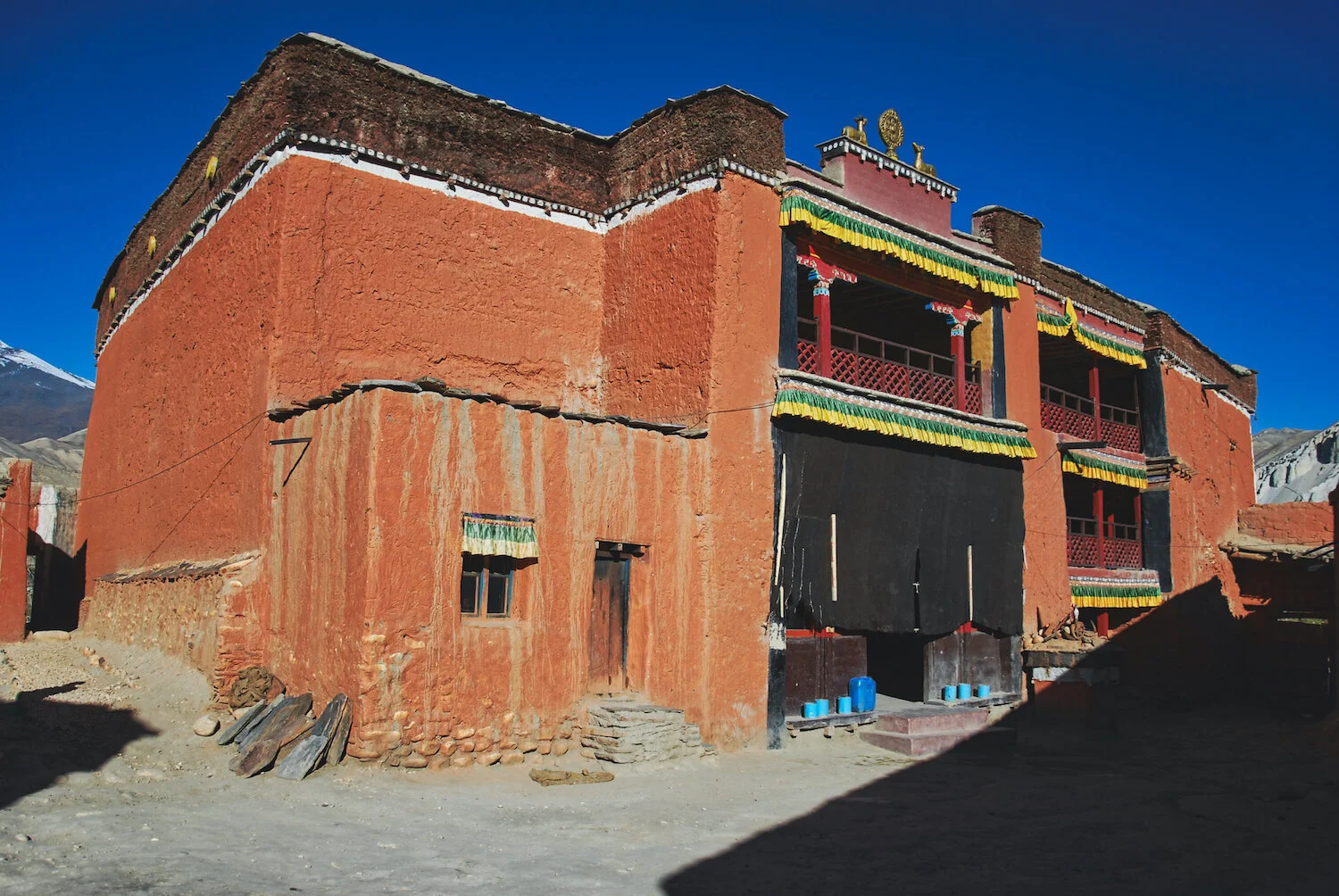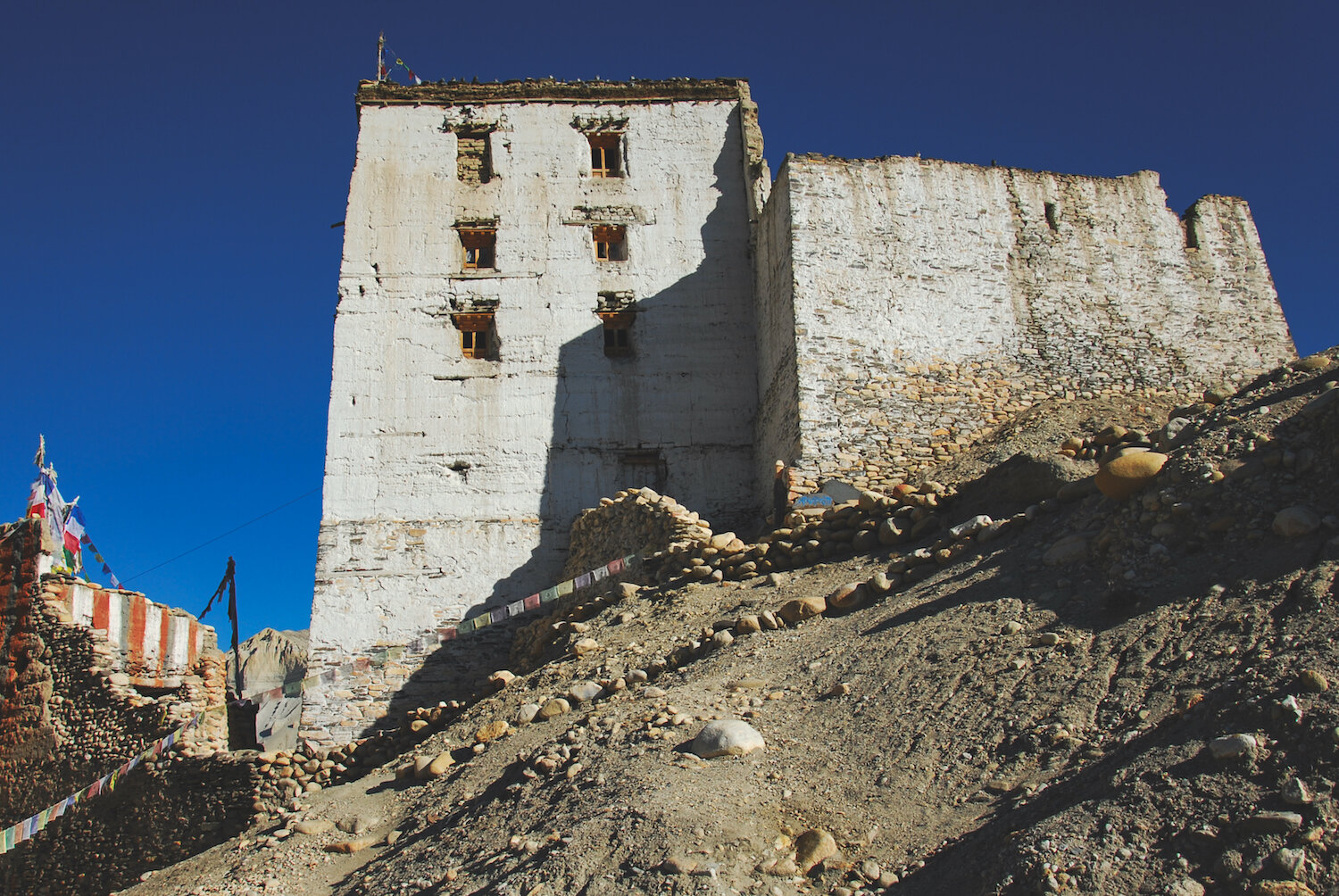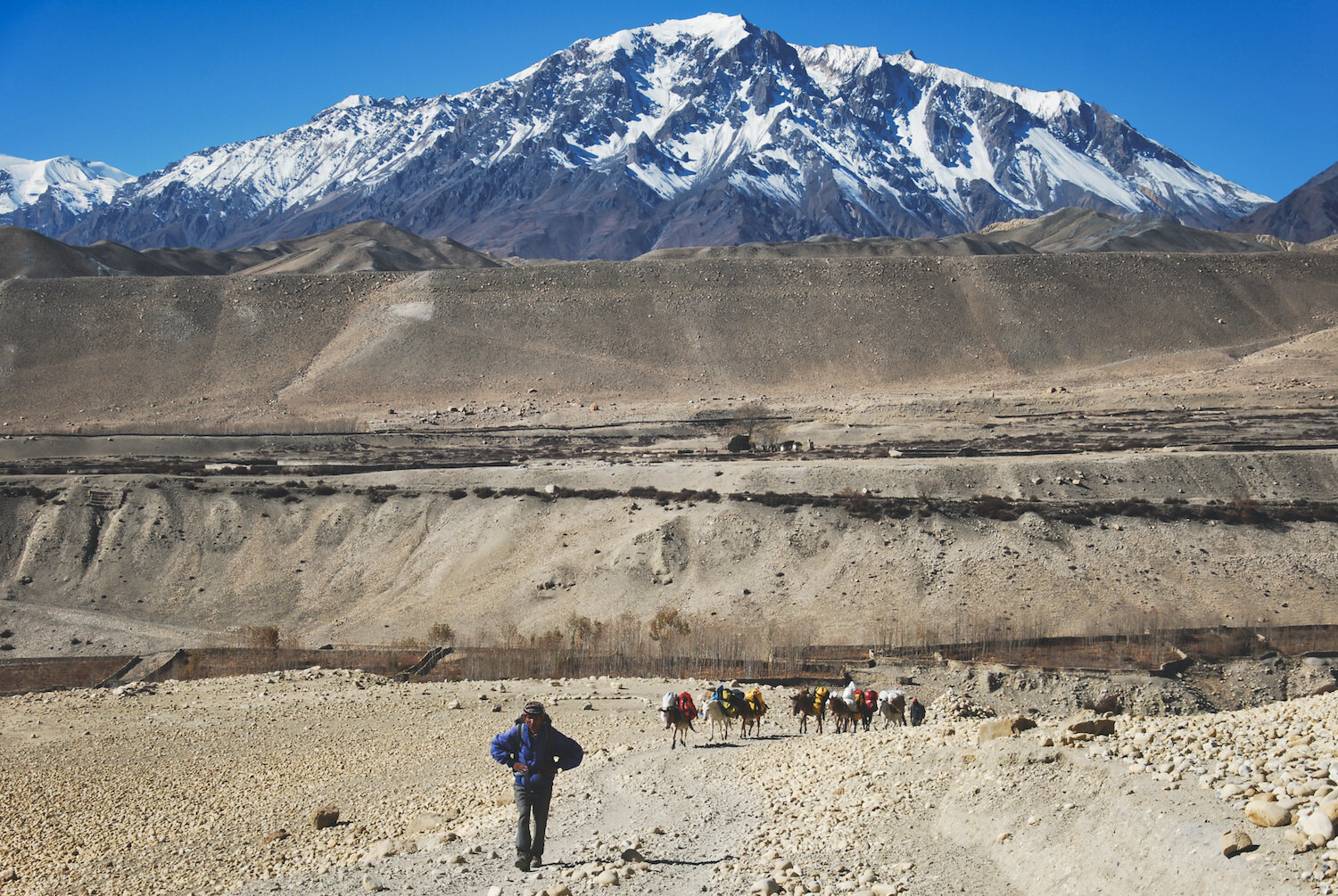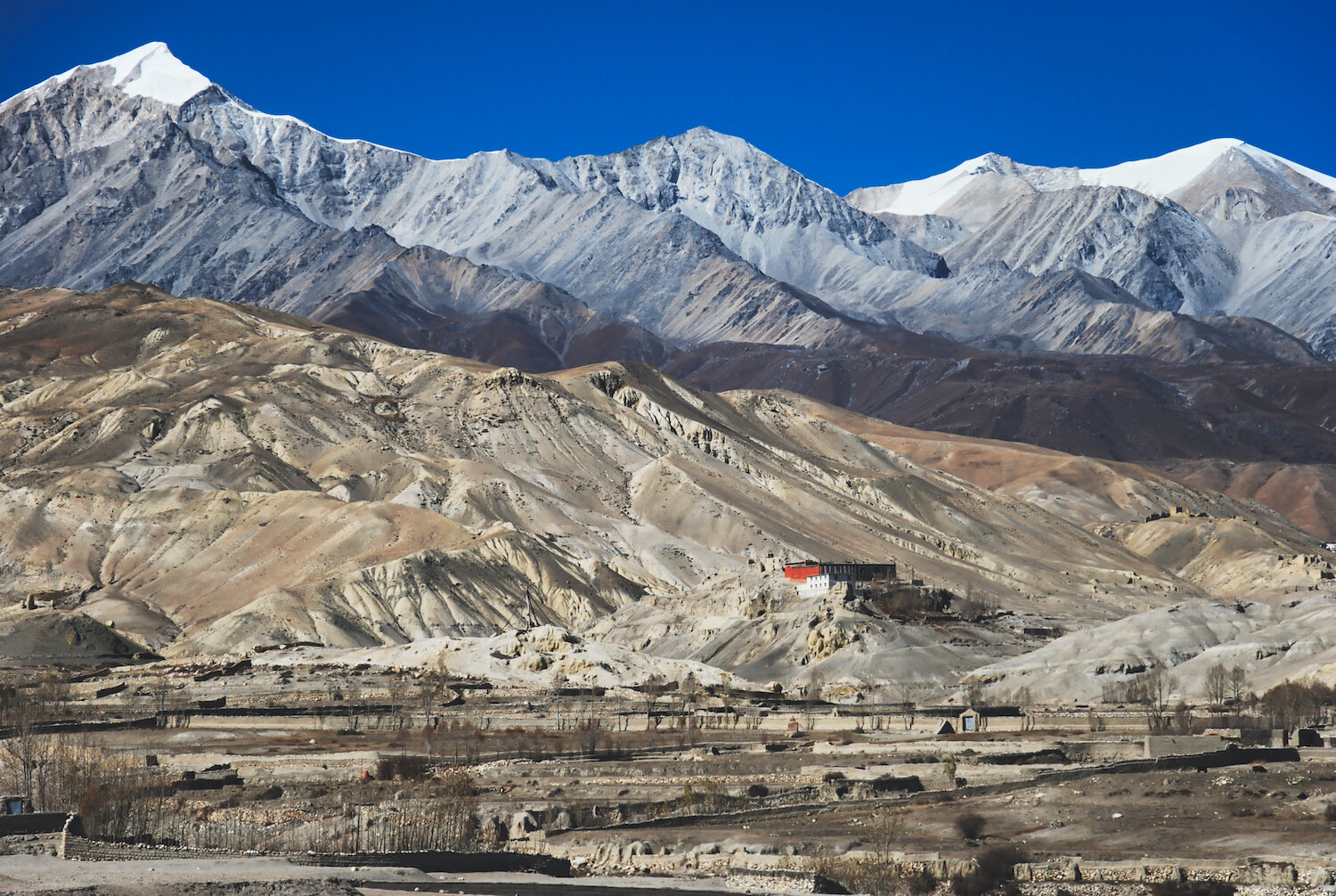92 - Blue Of The Deepest Hue (Upper Mustang, Nepal)
HACK, SPIT, COUGH, EXPEL. Men, women, and children alike ejected particulate matter with a ferocity that bordered on satirical. The phrase “cough up a lung” never felt so literal. Mustang was no exception. If anything, its dusty conditions only intensify the phenomenon. I did my best not to stare. Yummy.
The three amigos minus one (Hans, Gets, and I) weren’t the only game in town. On the third night, we shared a guesthouse with a group of mature French tourists who were every bit as mature/friendly as my German compadres. At dinner, they “conspired” to ignore the sad, lonely American… awwww. Can’t say I blamed them. Everyone was pooped from the hike. Speaking English was a bridge too far for energy reserves. Seeing as I’m emotionally resilient and wished to remain so, I retired at sundown to build capacity.
Notwithstanding an almost complete lack of companionship (Ram was friendly enough but didn’t have much to say, and I was normally twenty to thirty minutes ahead), the trekking was stupendous. In hindsight, the relative solitude was a feature, not a bug. Except for the few locals I passed on the trail, Mustang was mine. Isolation breeds introspection and concentration, a psychological cleansing. I didn’t want it. I needed it. Walk, think, pause, appreciate. Rinse and repeat to the beat of my oxygen-deprived heart. Yes, and thank you.
I remember skies so goddamn blue, it’s like an amateur filmmaker went hog-wild with the color grading, though I suspect altitude plus landscape-contrast heightened the effect. Without the dynamic range of the human eye, no camera could do it justice. I was in awe and, looking back, compare it to a psilocybin flashback. I wanted to stare into the firmament until going blind, appreciate the shit out of everything without letting it slip through my fingers… but it always does.
Imagine a northern Arizona Grand Canyon-ish scenario, throw in a Himalayan backdrop, add the crisp coolness of an upstate New York autumn, sprinkle in sporadic donkey bells, and you get a decent facsimile of what I saw day after day. And don’t forget the endless accoutrements of Buddhism dotting the terrain—cairns, prayer flags, chortens (stupas), mani stones, and mani walls. Breathtaking, desolate, beautiful, magical. (Insert other hackneyed and descriptively meaningless adjectives here.)
Ram voiced concern with my pace considering the altitude, 3000–4000 m most of the way. It’s nothing to shake a stick at, but we weren’t exactly in the Himalayan heartland. I explained how I’d been at altitude before and was feeling sparky. That’s not to say I was immune. My heart behaved in a way I prefer it not to, forcing periodic slowdowns. Still, for the most part, I felt tremendous—the background and scenery a wonderful performance-enhancing antidote.
Having left my sleeping bag on the bus from Kathmandu to Pokhara, I was at the mercy of each guesthouse’s blanket supply. At least I had the Kama Sutra’s random life prescriptions to light my fire. In Chapter IV, “Life of the Citizen,” the head of household should behave accordingly:
“Now the householder, having got up in the morning and performed his duties [i.e. the call of nature], should wash his teeth, apply a limited quantity of ointments on his person and collyrium on his eyelids and below his eyes, color his lips with alacktaka, and look at himself in the glass. Having then eaten betel leaves, with other things that give fragrance to the mouth, he should perform his usual business. He should bathe daily, anoint his body with oil every other day, apply a lathering substance to his body every three days, get his head (including face) shaved every four days and the other parts of his body every five to ten days. All these things should be done without fail, and the sweat of armpits should also be removed… After breakfast, parrots and other birds should be taught to speak, and fighting of cocks, quails, and rams should follow.”
I’m close on this. I prefer beryllium to collyrium on my eyelids, and I’m an ardent proponent of anointing my body with oil every day. My parrots don’t just speak—they sing, dance, juggle, and cook one hell of a Denver omelet. And as I’m a pacifist, I encourage my cocks, quails, and rams to settle their disagreements peacefully with mediation and cannabis.
On day four, I ripped my ridiculous hat. My heart became heavy with sorrow. Then I remembered the duct tape. My heart became light as a feather and full of glee. Duct tape: Never ever leave without it.
Most village dwellings are packed earth and dried mud bricks on a stone foundation, two or three stories built around a central courtyard. A roof balcony often overlooks the courtyard, a great place to gaze at a night sky unimpeded by ambient light. I wish I'd spent more time doing so, but the lure of a warm, sufficiently blanketed bed was overpowering.
I’ve read there used to be large forests in Lo, but all the trees were felled long ago. The trees that do exist are mostly poplars planted within the confines of stone walls. Poplar grows rapidly and makes adequate firewood.
If ghosts, demons, and malevolent spirits are a thing, spirit traps are the answer. You’ll find them all over the Tibetan Plateau on rooftops, over main entrances, and hanging conspicuously inside homes. The most common (that I saw) were those constructed of ram skulls, straw, wood, and sun crosses (woven yarn threads in a diamond-shaped pattern) meant to ensnare demons. Their display can be a tad unsettling given the remote setting, especially in the dusk and predawn twilight hours. Less common were the rabbit heads dangling from the ceilings. Less common, slightly more unsettling.
Being both curious and confused, I inquired. Ram, also in the dark, beseeched the gentleman preparing our meal at a lunch stop to explain the rabbit head suspended above the door. He was given an answer akin to “for shits and giggles.” Sure, some folks go with knickknacks and doilies, others decapitate small mammals and display their heads prominently in the foyer. Potāto, potäto. Later research confirmed the paranormal angle.
Most nights, the two musketeers and I huddled near a stove as the woman of the house juked and shuffled in a culinary frenzy. Dinner and a show. I found this domestic vignette oddly hypnotic, a welcome distraction. (Hans and Grets were still frosty, and Ram was silent as a church mouse.) All bubbled with positive energy, courteous and friendly almost to a fault. They seemed to relish our presence, an impetus for constant motion.
If not for yaks, horses, goats, sheep, and cows, I would’ve seen almost no animals save a scampering lizard here and a soaring bird there. Horses (the dominant pack animal) abound, as do sheep. I saw many a shepherd and wondered how lonely it must be with nothing but the wind’s howl and “baaaaa” for company. As the modern world encroaches, how long before there’s no one left to tend the flock? That bewitching siren song of “civilization” is irresistible.
The countryside is speckled with caves believed by archeologists and anthropologists to be thousands of years old. They’re everywhere. Many are hundreds of feet above ground, inaccessible on foot. (Flying monks? That’s the prevailing legend.) My curiosity was piqued, but I was to be sorely disappointed at the time. Ram knew nothing and locals seemed equally ignorant. There’s been a significant amount of research and exploration since my visit, though much is still unknown. I explored a few accessible ones along the way, but there was little of interest. The real treasures lay above as a National Geographic expedition was to discover.
“Mustang Caves or Sky Caves of Nepal are a collection of some 10,000 man-made caves dug into the sides of valleys in the Mustang District of Nepal. Several groups of archaeologists and researchers have explored these stacked caves and found partially mummified human bodies and skeletons that are at least 2,000–3,000 years old. Explorations of these caves by conservators and archaeologists have also led to the discovery of valuable Buddhist paintings, sculptures, manuscripts and numerous artifacts belonging to the 12th to 14th century. The caves lie on the steep valley walls near the Kali Gandaki River in Upper Mustang. Research groups have continued to investigate these caves, but no one has yet understood who built the caves and why they were built. The site is currently listed as a UNESCO tentative site since 1996.” See Wikipedia.
Mystery of the ancient kingdom discovered in Nepal where thousands of caves are carved 155ft off the ground
An estimated 10,000 of the caves have been found in the former Kingdom of Mustang in North, Central Nepal
They have either been dug into the cliffside or tunnelled from above
Caves are thousands of years old but who built them and why remains a mystery…READ MORE
On day five, we lunched at a tea house with credit card acceptance. Visa is everywhere you want to be even if the feeling ain’t mutual. The gift shop brimmed with alluring Tibetan treasures. I’d left home without my bag of infinite capacity and had zero desire to cope with souvenir logistics (carry, airmail, etc.). Still, had my Visa not been secured in a Kathmandu hotel safe, I may have succumbed to temptation.
That night, I had a paltry two blankets in my bedtime arsenal. Rather than divert bed covers from the family, I called up extra clothing from my auxiliary. The night was crisp but passable. Turns out, my suffering was in vain. The next morning I saw a storage room with enough quilts to keep Godzilla cozy. Any residual chill dissipated when I saw Hans and Grets wearing identical flannel shirts, identical pants (different color), and identical hiking shoes. I know adorable when I see it. This warmed my cockles.
We spent night six in a village (Charang?) whose atmosphere hovered between surreal American western and apocalyptic horror flick. Initially, we saw nobody. Had villagers been warned of our arrival? Shun the interlopers! And then a man approached, a man who appeared to be dancing toward us, perseverating up and down in an unnatural bobbing motion. I assumed we’d close the distance, then I’d hear the music. No music. No dancing. In all likelihood, the man suffered from a nerve disorder he was powerless to control. When we did encounter others, no one gave us a second glance, or a first glance for that matter. Perhaps, it’s bad luck to look upon the damned. I thought, Cue the Halloween theme. Paging Michael Myers. The narrow, maze-like layout felt like the perfect prelude to a zombie ambush. Ram fueled the sentiment by making a few wrong turns. A short inquiry led to our abode and relative safety… from my imagination.
I occupied a room next to Hans and Grets, a mere single sheet of particle board separating us. We were still passing only mild pleasantries and the temptation for obnoxious behavior was more than I could bear. In light of recent intestinal tribulations, I decided an exuberant display of flatulence would be in order upon retiring. Childish, petty, and damn funny. Sadly, my bowels failed to heed my clarion call. Team Germany was spared my wrath.
My intestinal disappointment surprised me in light of the ungodly amounts of food I shoved down my pie hole. This huge uptick in activity spawned exponential appetite growth. I was often still peckish after devouring three helpings of dal bhat, a surprisingly satisfying dish of steamed rice and lentil soup. From the outset, Ram again highlighted his uneasiness over my tendency to exceed the meal budget. I continued to assure him I’d cover whatever costs my stomach saw fit to incur. So, I continued to eat… and eat… and eat… and eat...
After watching Hans and Grets’ porter lug around half his body weight, I coined a new term: humulan or human mule. This was by no means extraordinary. Porters across Nepal often carry up to 60 kg (132 lb) during a trek. Mostly, they’re a jovial bunch. My new friend was no different. He wore a perpetual shit-eating grin as if waiting for me to get the joke.
Tibetan Yak Butter Tea. Catch the fever. Tea leaves, yak butter, hot water, and salt. Stir briskly. Enjoy. Drinking liquefied butter was a concept I’d never encountered, but I had to give it a twirl. It’s an acquired taste, and though I didn’t love it, I didn’t hate it either. We of western bent have been misled to believe saturated fat is the devil’s spread. To date, no credible scientific data exists to support this claim. On the contrary, a diet full of animal fat minus the standard western fare of refined sugar and ultra-processed foods is a staple of traditional societies the world over. I now enjoy a healthy dollop of Irish butter every morning in my coffee. No matter where you go, there you are.





